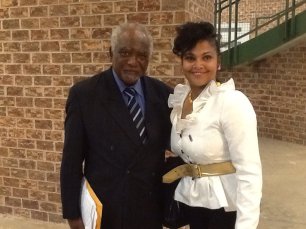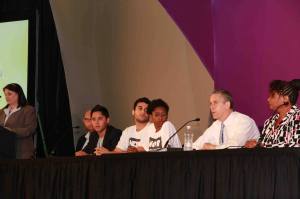-
Recent Posts
Recent Comments
Archives
- May 2018
- January 2017
- April 2016
- January 2016
- November 2015
- April 2015
- February 2015
- December 2014
- September 2014
- April 2014
- January 2014
- November 2013
- October 2013
- September 2013
- August 2013
- July 2013
- June 2013
- May 2013
- April 2013
- January 2013
- December 2012
- October 2012
- September 2012
- August 2012
- March 2012
- February 2012
- January 2012
- December 2011
- November 2011
- September 2011
- August 2011
Categories
- Accountability
- Achievement Gap
- Advocacy
- Anti-Violence Summit
- Black Leaders
- Bullying
- Change
- Chicago Violence
- Civil Rights
- College Students
- Convention
- Cultural Responsiveness
- Deeper Learning
- Diversity
- drug addiction
- Early Childhood Education
- Education Nation
- Education Transformation
- Elementary and Secondary Education Act (ESEA)
- Emerging Minority Leadership
- Family Engagement
- Future Ready
- Gender Gap
- Grad Nation Summit
- Graduation Rates
- Gun Violence
- Hunger
- Internet Access
- Jobs Now
- Kwanzaa
- Leadership
- Legislative Hearings
- Math (STEM)
- Mental Health
- Military Families
- Mom Congress
- National Family Literacy Month
- Newtown
- Nutrition
- Parent Engagement
- Prison Industry
- PTA
- Reauthorization of ESEA
- Revolutionary
- ROTC
- School Funding
- School to Prison Pipeline
- School Violence
- SNAP
- Social Media
- STEAM
- STEM
- Student and School Success
- Take Action
- Teacher Appreciation
- Technology
- Town Hall
- Uncategorized
- Unity
- Veterans
- Volunteers
Meta
SNAP on the Chopping Block
TAKE ACTION: Contact your legislator and sign this petition!
Marching Forward-By Brenda-Ms. Martin, If You’re Nasty!
The recent Women’s March on Washington (Left Photo) – which included men, women and children- was categorized by some as, “one of the largest and most significant demonstrations for social justice in America’s 240-year history.”


Taking It to the Streets
More than 5 million people around the world took to the streets in peaceful demonstrations on all seven continents, launching a new movement for human rights, women’s rights and justice.
In many areas – such as Lexington, KY (Right Photo) and Austin, Tx – were some of the largest marches in those areas in history! Bonn, Germany even enjoyed many participants! Although I did not agree with everything and every word or “thought” chosen, I did appreciate those who stood up for such things, as – equal rights, equal pay for equal work; quality education, more healthcare, gunsense laws; and against white privilege (as experienced by many), sexual harassment, and more. I am a praying woman who also believes in advocacy. I don’t think they are mutually exclusive. We need both!
I don’t think we have to attend every march, but it’s awesome to be able to visit our capitol in our states and sometimes in Washington, DC to personally share our issues and request support. I also recognize that everyone isn’t always able to do that, but we should be able to write letters, email and or call our Elected officials. We can all do something and we must each do our share to make this country better whether it’s helping to feed the hungry, joining your local Parent Teacher Association (PTA), giving blood to the American Red Cross, mentoring youth, learning about different cultures, etc. This outreach marches our country forward, faster.
“Nasty Woman”
One blog I read ie, Nasty Woman, spoke positively on prayer but also criticized marching (for herself) as well as what some of the women wore on their heads representing “their” private organs. I believe in the power of prayer and the power of protest. God, gives us the strength to use our voices in multiple ways. Praying is important, but I don’t think our work stops there. Prayer requires faith and as is stated in James 2, “Faith without works is dead.” Unity is a beautiful and powerful tool when coupled with fervent prayer. To see people of different faiths work together to try to right wrongs peacefully, and make our country what it needs to be- is awesome!
Even though, what some of them wore on their heads was not my preference, I choose not to criticize what didn’t symbolize hate, because I am ever so mindful of my foreparents who had to be concerned of the white sheets that some wore on their heads that very much symbolized hate by those who threatened my fore parents lives, those who supported equality and our democracy. If I were to criticize the marchers for some of that blogger’s reasons, I would first criticize the many publications that show nude pictures of women exploited for others’ lust and displaying them as sex objects. I would criticize those who purchase them and pose in them- including our current first lady Trump.
Nastier Actions
I am grateful there is room for various viewpoints, prototypes of protest and forms of poetic expression. We also should expect more from our presidential candidates. During a debate*, Trump referred to Clinton as a “nasty woman” even though no man has ever described another man as such in a presidential debate. (Additionally, it is he who has been sued multiple times for nasty or unwanted sexual behavior.) Some of the speakers at the march such as actress and advocate, Ashley Judd– who attended University of Kentucky in our Bluegrass State and high school in our area-recited a poem written by 19  year old, Nina Donovan, of Tennessee saying, “I am not as nasty as racism, fraud, conflict of interest, homophobia, sexual assault, transphobia, white supremacy, misogyny, ignorance and white privilege.“
year old, Nina Donovan, of Tennessee saying, “I am not as nasty as racism, fraud, conflict of interest, homophobia, sexual assault, transphobia, white supremacy, misogyny, ignorance and white privilege.“
Some folks criticized some of the content and word usage in her presentation, even though many didn’t seem to criticize the person originally using some of those very words and still elected him to the highest office of the land. So, an actress and a student can’t say it, but the person some elected to the highest office of our country-can. The tape aired of Trump using some of this language basically describing himself committing sexual assault, was especially telling because of prior sexual harassment/assault lawsuits or reports over a span of years as noted above and even recently. (*Clinton also had referred to some Trump supporters as “deplorables”, for which she later clarified and apologized for over generalizing and added, “I won’t stop calling out bigotry and racist rhetoric in this campaign.”)
How Do We Move Forward?
The question still remains for some, “How do we move forward with this much history, hurt and distrust that have not been resolved? In addition to God telling us to pray, He also instructs us to confess and repent. We can’t change America until we ourselves are changed.
- We can make needed changes when we confess our negative role in our lives or our world. We then can allow ourselves to truly feel badly enough for that role, that we decide we will try to do better. We must also forgive ourselves for our roles as well as forgive others.
- We must be more inclusive and show in our actions that we recognize that all people need access to survival.
- We must care about all of our citizens and not just force half the country to live the way the other half dictates.
- We must respect each other’s constructive and inclusive beliefs, families, rights, cultures, privacy and more, if we are to be truly united.
- Let’s get rid of the nasty labels. I am mindful of Janet Jackson’s hit where she proclaims, “No my first name ain’t baby, It’s Janet -Miss Jackson if you’re nasty!” I think, we should be respectful in what we call one another as well as what we call ourselves. But the power to define yourself for yourself is a privilege we all have and your actions should reflect what you say you believe. This helps us to march forward wherever we are to get to where we need to be.

Posted in Advocacy, Change, Civil Rights, Diversity, Gender Gap, Gun Violence, Revolutionary, Take Action, Uncategorized
Tagged Ashley Judd, Change, confess, deplorables, Education, feminism, God, Gunsense, Health, Janet Jackson, marching, Nasty woman, Parent-Teacher Association, pray, PTA, repent, Revolution, social justice, University of Kentucky, white privilege, Women's March on Washington
1 Comment
Dr. Pruitt in Kentucky adopts TV Frasier’s, “I’m Listening”
 Education Town Hall with Education Commissioner Dr. Stephen Pruitt at KEDC in Ashland during his eleven schools tour: “How does Kentucky define school success?
Education Town Hall with Education Commissioner Dr. Stephen Pruitt at KEDC in Ashland during his eleven schools tour: “How does Kentucky define school success?
“This listening tour will be an opportunity for all education shareholders to provide input to the Kentucky Department of Education on the design of a new education accountability system that will be used as the basis to improve our schools and celebrate their educational progress. The goal is to produce a system that is fair, reliable, valid and easier to understand,” introduces the newly selected Kentucky Education Commissioner, Dr. Stephen Pruitt.
The state’s desire to devise a better accountability system was taken on by Dr. Pruitt’s predecessor as it was a stipulation in the Race to the Top (RTTT) funding. I was honored to serve on the Teacher Evaluation Steering Committee for our state with Dr. Terry Holliday as a parent representative for Kentucky Parent Teacher Association (PTA). I firmly support an accountability system that includes multiple measures, fairness and takes into account student growth. According to my research, one of the four major RTTT focus areas included building data systems that measure student growth and success, and inform teachers and principals about how they can improve instruction.
Congress reauthorized the Elementary and Secondary Education Act (ESEA), the main federal law governing P-12 public education and officially left behind, the “No Child Left Behind” era. The new law, Every Student Succeeds Act (ESSA) made some changes to the requirements of accountability systems.  As Dr. Pruitt exclaims, “The new federal law gives us an incredible opportunity here in Kentucky to bring all shareholders to the table to create a system that not only holds schools and districts accountable for students’ education, but also celebrates good things happening in our schools!” He opened the floor at our town hall by praising Kelsey Grammer’s television sitcom’s Frasier for leading his on-air radio psychiatry show by saying, “I’m listening.” Dr. Pruitt, made the mantra his own as he repeated, “I’m listening.”
As Dr. Pruitt exclaims, “The new federal law gives us an incredible opportunity here in Kentucky to bring all shareholders to the table to create a system that not only holds schools and districts accountable for students’ education, but also celebrates good things happening in our schools!” He opened the floor at our town hall by praising Kelsey Grammer’s television sitcom’s Frasier for leading his on-air radio psychiatry show by saying, “I’m listening.” Dr. Pruitt, made the mantra his own as he repeated, “I’m listening.”
“He is taking the opportunity to hear our voices. He is listening to what we have to say and will make the changes to help the educational system,” said Catlettsburg Elementary principal Marcy Prater. The Appalachian Student Voice Team asked “How can schools better engage student interest in learning?” Some students from various schools spoke on dyslexia, technology and many important topics. Dr. Pruitt praised our town hall meeting for having the most youth speaking!
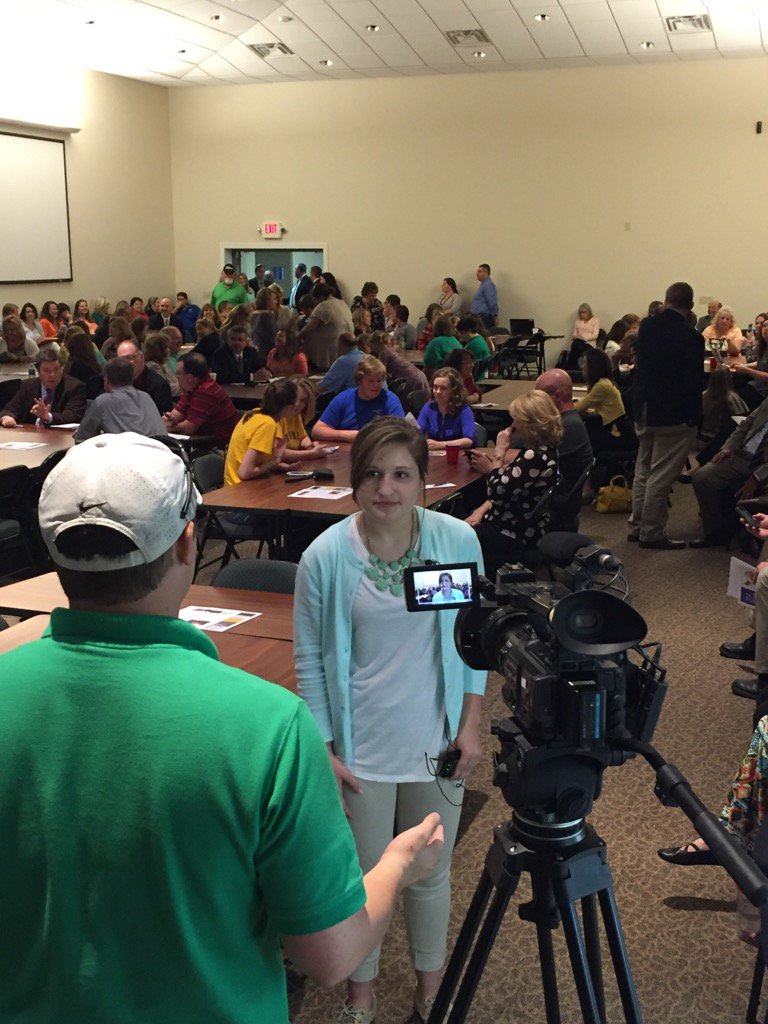
As an engaged parent, I was glad to make the following points:
1. Resources must be better allocated to fulfill the needs of our students, staff and school. We must establish a better way of correlating money spent to outcome to better ascertain some of our Return on Investment. This would help as we continuously strive to create and measure school success.
2. I expect more support for Parent/Family Engagement. “Characteristics” that we value must be better defined so that we know when we have achieved it. For example, we seek measures and processes that have “reliability”. What percentage of reliability must exist before we can label something as “reliable”? Realistically, 100% is too high and 50% is too low. How is it achieved? When parents & staff can better understand our goals, challenges and accomplishments, we can better support our children and better measure student success.
3. Most teachers do a wonderful job! However, they must alternate their teaching strategies to adjust or better identify students’ best learning styles. This must be done before students resign thinking they just are not smart enough when they might understand more when taught and study differently. (However, teachers must also discern when more focus, flexibility, or more pushing away from one’s comfort zone is needed for students and teachers.) This can better ensure that all students are successful.
4. Even though “inclusion” is important in the classroom, we must devise a fairer way of assessing tests and labeling test outcomes that includes recognition of student challenges. Ie., Is it fair to compare two students the same who run in a race and one student has two legs and another has one? I know it is not easy, as we want fair methods that include everyone and allow them all to feel a sense of pride for their individual situations and results. (We must also ensure that funding is available to execute mandatory 504 Plans under Section 504 of the Rehabilitation Act of 1973; Individualized Education Plans (IEPs) under Individuals with Disabilities Education Act (IDEA) – which requires states to provide a “free appropriate public education (FAPE)” to all students with disabilities and IEPs for specific kinds of disabilities; other requirements under IDEA; as well as ample funding for gifted education.) This can also help to ensure that all students are successful and we can celebrate all students inclusively!

I am grateful our new state education commissioner is taking time to visit different areas and not only to talk to various constituents but “to listen.” I was very inspired by the comments by the elementary and high school students, teachers, administrators and community partners who shared good ideas for making our schools better for our children. As our Russell Independent Schools Superintendent, Sean Horne, states, “It’s about kids.”
I look forward to seeing our input become a part of the new accountability system and providing feedback on it in November. (See timeline below.) I believe this process shows it to be a “grassroots” framework as opposed to the appearance of a “top-down” mandate. It would be even more awesome to have a seat at the table as a stakeholder in the process of making our children, schools and communities more successful and accountable. I love advocating for children and I too enjoy watching Frasier. You see, “I’m listening” also.

Additionally, those who are unable to attend the meetings, will still have the opportunity to submit their suggestions and comments at: KyEdListens@education.ky.gov. You might find it helpful to address one or more of the following guiding questions:
- What do you expect from our schools?
- What school characteristics are most important?
- How should we measure student and school success?
- How do we ensure all students and schools are successful?
- How should we celebrate school success?
For more comments and pictures from this event, follow #KyEdListens on Twitter or Facebook. (The photo above includes Dr. Stephen Pruitt, Kathy Setterman, Kentucky Arts Council Board member and Brenda Martin, National PTA Social Media Ambassador. Photo by Becky Blessings, KDE Director of Communications.)
Performance Based Funding & Cuts for Higher Education
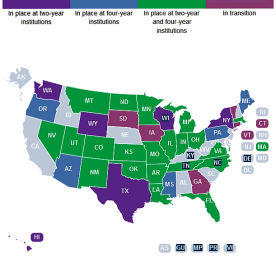
Approximately, Thirty-two states use Performance Based Funding for higher education which means they have a funding formula or policy in place to allocate a portion of funding based on performance indicators such as course completion, time to degree, transfer rates, the number of degrees awarded, or the number of low-income and minority graduates. This includes such states as Illinois, Indiana, Kansas, Louisiana, Michigan, Minnesota, New York, North Carolina, Ohio, Oklahoma, Tennessee, Texas and Virginia .
Performance based funding does seem to have become dominant in our country but I am glad at least Kentucky is trying to discern what is best for our state and our residents. A concern that I have, along with some other critics, is that even though we do want accountability for our institutions, we don’t want to remove incentives for those institutions to accept at-risk students. Also, if funding is denied to schools with low graduation rates (which is a state defined metric for some) then those institutions’ ability to improve performance could be jeopardized even further. The more low-income and all students are educated, the more likely they are to be self-sufficient and save our state millions of dollars! If our higher education funding become based on “Performance”, then we must have incentives to reward schools for working with these students in productive ways that give everyone a chance to be productive citizens.
It’s unfortunate that so many of our issues to improve education end up divided upon party lines as with support for performance-based funding in Kentucky. As pointed out by Dr. Wayne D. Lewis, Jr. an Associate Professor of Educational Leadership at the University of Kentucky who is now leader of the Kentucky Education Workforce Committee, this resolution has been divided on party lines with democrats being against it and republicans for it. We must look at our commonwealth where all of its citizens can count on the best being done for all students and their abilities to receive quality education and acquire -or help to create-quality employment.
I think all would agree, that more funding is needed. Nearly all states have cut funding to higher education schools since the recession with the average state spending $2026 (or 23%) less per student. Kentucky’s dropped a bit more than average spending $2524 (or 25.4%) less per student. Even though 42 states did show some increase over the past school year where twenty-six states increased funding by more than 5 percent per student (adjusted for inflation), Kentucky still spent 2.3% less per student in 2014-2015. In fact, according to the Center on Budget Policy and Priorities,“Funding cuts vary from $6 per student in Illinois to $179 in Kentucky. Five states — Alaska, Arkansas, Kentucky, Texas, and West Virginia — cut funding by more than $100 per student over the past year.”
Title I: Parent, Family, Community Engagement

Pike County Schools, Title I Parent Engagement #piketitleIconference
Parent, Family or Community Engagement is more than an acquisition on most schools wish list but it is a continuous journey as demonstrated by being the focus of conferences by staff leaders of school systems such as Pike County’s dynamic Title I conference in Kentucky. The conference also provided Professional Development (PD) for its teachers, Family Resource leaders, and staff. Professional Development:
- Aligns with Kentucky’s Core Academic Standards in 704 KAR 3:303, educator effectiveness standards, individual professional growth goals, and school, school district, and state goals for student achievement;
- Focuses on such areas as individual improvement, school improvement, and program implementation; and
- Is on-going.
According to the U. S. Department of Education, it is important to create a concerted focus on developing adult capacity, whether through professional development for educators; academies, workshops, seminars, and workplace trainings for families; or as an integrated part of parent-teacher partnership activities. Pike County Schools went even further to include a national perspective through Tuesday’s keynote speaker and 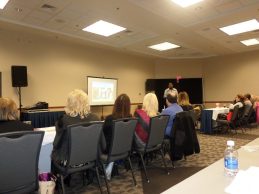 workshop facilitator, Byron V. Garrett, CEO, National Family Engagement Alliance who encourages parents and teachers to “read aloud” with students and engage them with current tools more intentionally. FRYSC Coordinator, Eugenia Whitt, was one of many who enjoyed his workshop and enthusiastically recapped, “He let us know that to reach more families to become more engaged, we must do more than we did years ago and use social media. We must do whatever it takes!” Garrett cited that upwards of 40% of students are chronically disengaged from school. He illustrates through life’s experiences that “What the mind conceives and the heart believes, the hands can achieve.” This is also a central
workshop facilitator, Byron V. Garrett, CEO, National Family Engagement Alliance who encourages parents and teachers to “read aloud” with students and engage them with current tools more intentionally. FRYSC Coordinator, Eugenia Whitt, was one of many who enjoyed his workshop and enthusiastically recapped, “He let us know that to reach more families to become more engaged, we must do more than we did years ago and use social media. We must do whatever it takes!” Garrett cited that upwards of 40% of students are chronically disengaged from school. He illustrates through life’s experiences that “What the mind conceives and the heart believes, the hands can achieve.” This is also a central 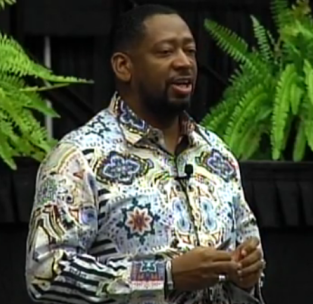 theme in his new Scholastic book, There’s Greatness on the Inside. As Garrett states in the Huffington Post, “By showing our children that achievement in all forms can bring happiness, we create well-rounded adults. Greatness in the classroom, on the playing field, with musical instruments and art supplies can all translate into success later in life. The name of the game is showing that mastery and achievement are the ways forward, because everyone has different skills and abilities and because there isn’t one single path to success, everyone can get there.”
theme in his new Scholastic book, There’s Greatness on the Inside. As Garrett states in the Huffington Post, “By showing our children that achievement in all forms can bring happiness, we create well-rounded adults. Greatness in the classroom, on the playing field, with musical instruments and art supplies can all translate into success later in life. The name of the game is showing that mastery and achievement are the ways forward, because everyone has different skills and abilities and because there isn’t one single path to success, everyone can get there.”
Why is it so important for schools to learn how to better engage families? According to Education.com and other advocates, Parents and families have the most direct and lasting impact on children’s learning and development of social competence. When parents are involved, students achieve more, exhibit more positive attitudes and behavior, and feel more comfortable in new settings. Another presenter, April Traywick with Prichard Committee’s Governor’s Commonwealth Institute of  Parent Leadership (GCIPL), states that as we welcome parents into the schools, we must remember to not only have a smile on our faces, but to have a smile in our voices, especially on the phone.
Parent Leadership (GCIPL), states that as we welcome parents into the schools, we must remember to not only have a smile on our faces, but to have a smile in our voices, especially on the phone.
“We do believe that’s the way we can make a difference as far as improving our schools. Teachers have to be exposed to quality professional development in order to improve” said Pike County Schools Superintendent Reed Adkins. Robert  Osborne, Director of Federal Programs (such as Title I), praised Superintendent Adkins, all staff, p
Osborne, Director of Federal Programs (such as Title I), praised Superintendent Adkins, all staff, p resenters, students, sponsors and non-profit vendors (Scholastic, Beta Club, Challenger Center, etc.) while recounting how well the canned food drive did in conjunction with this project. He also stated that the remaining food from the delicious luncheon will be donated to the Homeless Shelter. In Kentucky, some 31,000 students are homeless – living in a homeless shelter, motel or campground, car, outside, or staying with relatives or friends. This is 5% of our state’s public school students-highest of any state! In the United States, in 2013, some 2.5 million students were homeless at some point.
resenters, students, sponsors and non-profit vendors (Scholastic, Beta Club, Challenger Center, etc.) while recounting how well the canned food drive did in conjunction with this project. He also stated that the remaining food from the delicious luncheon will be donated to the Homeless Shelter. In Kentucky, some 31,000 students are homeless – living in a homeless shelter, motel or campground, car, outside, or staying with relatives or friends. This is 5% of our state’s public school students-highest of any state! In the United States, in 2013, some 2.5 million students were homeless at some point.
What is Title I? Title I, Part A (Title I) of the Elementary and Secondary Education Act, as amended (ESEA) provides financial assistance to local educational agencies (LEAs) and schools with high numbers or high percentages of children from low-income families to help ensure that all children meet challenging state academic standards. 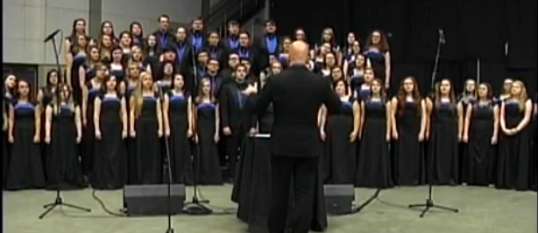 We were also blessed with music by the choir of Pike County Central High School with songs and solos that would rival a professional music company or concert! Director Matt Moon continues to lead this art form and included a wonderful tribute to veterans in America, the Beautiful.
We were also blessed with music by the choir of Pike County Central High School with songs and solos that would rival a professional music company or concert! Director Matt Moon continues to lead this art form and included a wonderful tribute to veterans in America, the Beautiful. 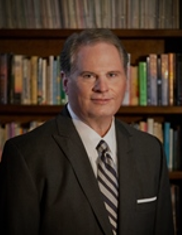
On the previous day, Dr. Devin Stephenson, President and CEO of Big Sandy and Community and Technical College, served as keynote speaker. Dr. Stephenson exemplifies the value of a community college education which launched him on a path to greatness as President and CEO of Big Sandy and Community and Technical College to now. Over two hundred teachers attended the two-day conference consisting of over 3o breakout sessions for professional development (PD). Pike County requires more PD for their district than the mandate.
HAPPY NATIONAL PARENT INVOLVEMENT DAY November 19, 2015!

![]()
Blog by Brenda Martin, A National PTA Social Media Ambassador, GCIPL Fellow, former KDE Teacher Effectiveness Steering Committee parent representative serving as an official blogger for Title I Conference Day two. For more information on Family Engagement in Education Act, click here. Follow Brenda on Twitter @bdrumartin.
Scholastic’s Thank you Plaque
Digging Deeper Into Deeper Learning
 Twenty-First Century Skills in education have become very important in making certain our students are Career and College Ready. Those skills weld the 3Rs: core academic subjects as defined by No Child Left Behind (NCLB) and 21st century themes and 4Cs: 1. critical thinking and problem solving, 2. communication, 3. collaboration and 4. creativity and innovation. While some components such as Global Awareness directly focus on the teachers, some areas such as “Deeper Learning” directly focus on the students. Students are being given more opportunities to illustrate their perspectives and research skills while better understanding global and cultural diverse issues. According to DeeperLearning4All.org, more than 500 schools around the country are currently implementing deeper learning. These schools create environments that allow students to delve more deeply into understanding core content and use that knowledge to communicate effectively, solve problems more thoughtfully, think critically, and reflect individually about their learning. These practices have led to positive
Twenty-First Century Skills in education have become very important in making certain our students are Career and College Ready. Those skills weld the 3Rs: core academic subjects as defined by No Child Left Behind (NCLB) and 21st century themes and 4Cs: 1. critical thinking and problem solving, 2. communication, 3. collaboration and 4. creativity and innovation. While some components such as Global Awareness directly focus on the teachers, some areas such as “Deeper Learning” directly focus on the students. Students are being given more opportunities to illustrate their perspectives and research skills while better understanding global and cultural diverse issues. According to DeeperLearning4All.org, more than 500 schools around the country are currently implementing deeper learning. These schools create environments that allow students to delve more deeply into understanding core content and use that knowledge to communicate effectively, solve problems more thoughtfully, think critically, and reflect individually about their learning. These practices have led to positive  student outcomes. ”
student outcomes. ”
The results of the American Institutes of Research 2014 study found that students in deeper learning schools graduated from high school and attended selective colleges at higher rates than comparable students in non-deeper learning schools.” Click here to see a video on “What Deeper Learning Looks Like.”
Highly effective educators have always provided deeper learning, using innovative approaches to delivering rich core content to students allowing them to learn and demonstrate their understanding of what they learn by applying it.
Six Competencies of Deeper Learning Framework
According to the Hewlett Foundation, the deeper learning framework includes six competencies that are essential to prepare students to achieve at high levels.
1. Master core academic content
2. Think critically and solve complex problems
3. Work collaboratively
4. Communicate effectively
5. Learn how to learn
6. Develop academic mindsets
Transforming Schools
As stated by Alliance for Excellent Education, rigor and challenging work are essential for deeper learning. This is why Performance Assessments, Project-Based Learning and Common Core Standards can be used to increase deeper learning and student outcome. Visit here for more ideas on “Transforming” schools to better use these strategies.
Expert Meyer notes, performance assessments must be “authentic”. Performance is “authentic” to the extent it is based on challenging and engaging tasks which resemble the context in which adults do their work. In practical terms, this means that an authentic task or assessment is one in which students are allowed adequate time to plan, to complete the work, to self-assess, to revise, and to consult with others.
Expert Grant Wiggins contends that three factors determine the authenticity of an assessment: the task, the context, and the evaluation criteria. An authentic task is one which requires the student to use knowledge or skills to produce a product or complete a performance. Based on this definition, memorizing a formula would not be an authentic task; however, using the formula to solve a practical problem would be.
While we are grateful for awesome schools and their contributions to the quality of education for our children, we must continue to develop our leadership to provide the vision and innovation necessary to continue moving forward. In Edweek, according to Carmen Coleman, director of Next Generation Leadership at the Center for Innovation at the University Of Kentucky College Of Education, in order to reimagine learning, schools must – among other things – reimagine the role of leaders. To transform suggests that you begin to reimagine what could be, rethink what you accept as standard and create something new.
Even though “deeper learning” is not a new concept, its application must be embedded in our curriculum standards and be a rudimentary component of students routine projects in new and exciting ways. Education must involve personalized learning and provides real life applications that engage students in Big Picture Learning. Deeper learning is the pathway to deeper success.
Innocent or Guilty of Killing Police?
The Mumia Abu-Jamal- Controversy
Journalist Abu-Jamal had been a target of CoIntelPro. In 1980, at the age of 26, Mumia was elected president of the Philadelphia chapter of the National Association of Black Journalists. The following year, he was named one of the city’s “People to Watch” by Philadelphia Magazine. The article spoke of his “eloquent, often passionate and always insightful interviews.” He had recently lost his radio journalist job with National Public Radio before he was accused of killing a Philadelphia police officer, Daniel Faulkner in 1981, who had served in the U. S. Army. A debate continues, “Has Abu-Jamal been imprisoned justly or unjustly?” He was sentenced to death but received a new capital sentencing hearing. His lawyer said that the results constituted “extraordinarily important new evidence that establishes clearly that the prosecutor and the Philadelphia
Police Department were engaged in presenting knowingly false testimony“. In this transcript, there is a comment by a witness that the police made her falsely testify against Mumia. He was removed from death row in 2012, but was not granted a retrial. Somecritics wonder why his younger brother, William Cook, did not testify on Jamal’s (born Wesley Cook) behalf at the 1982 trial. He could not be found but witnessed the crime as he was driving the Volkswagen when Officer Faulkner pulled him over. Abu-Jamal had been associated with and had given voice to the MOVE group to which thePhiladelphia Police Department was antagonistic. In 1978, over 600 police raided MOVE’s home with guns and arrested Move-9. All were sentenced to over 30 years in prison. Interestingly, Abu-Jamal was one of the reporters who covered this story. Mumia Abu-Jamal spoke out from the crowd of journalists, sharply raising questions about the way police had destroyed evidence after the raid. Through a call on the radio, Mumia aka “William Wellington Cole” got Judge Mahmed of the case to admit he had “no idea” who the murderer was, which highlighted the miscarriage of justice of the imprisonment of the MOVE-9. Such acts earned him his grassroots moniker, “The Voice of the Voiceless.“
Reportedly, “A police report later that night shows that Civil Affairs inspector Fencl was quickly called into this investigation. Fencl was the same police official who gave the order to strip Black Panthers in the street in 1970 (and photographed for the papers to humiliate them before their convention), who planned the raid on MOVE’s Powelton home and who headed the political police unit that had spied on Mumia since he was 15…. In 1974 two pregnant women from MOVE were man-handled by cops until they miscarried. MOVE’s demonstrations intensified. The police responded with a campaign of “arrest on sight.” Between 1974 and 1976, there were 400 arrests of MOVE members, resulting in bail and fines of more than half a million dollars. Life Africa, a three-week-old baby, was killed during one violent police attack.” Later in 1985, MOVE’s house was attacked and bombed by police, killing children, MOVE founder– John Africa, and others while destroying over 50 homes.
Abu-Jamal wrote books, notably 1995’s Live from Death Row, which deals with prison, social and political issues. There is a petition seeking his release. He is the subject of the song, “Voice Of The Voiceless” by Rage Against the Machine. A controversial film was made in 2010 by Tigre Hill. Stephen Vittoria made a film about him, Long Distance Revolutionary. You can follow @MumiaAbuJamal and @LDRMovie. Presidents Jacques Chirac of France and Nelson Mandela of South Africa, Foreign Ministers Kinkel of Germany and Derijcke of Belgium, and members of the Japanese Diet have urged the U.S. to grant Jamal a new trial. Officer Daniel Faulkner’s wife, Maureen, still contends that the rightfully convicted murderer of her husband is in jail.
Posted in Advocacy, Civil Rights, Gun Violence, Revolutionary
Tagged Mumia Abu-Jamal
Leave a comment
Increasing and Improving Internet Access for All Students!

Future Ready Map by http://Tech.ed.gov
For our schools to be ready for the Future, is indeed a concern especially for so many low-income and rural schools lacking Wi-Fi and technology. I am encouraged by FCC Chairman proposed $1.5B increase on E-Rate spending from $2.4B to $3.9B, which will be voted on December 11, 2014. Tom Wheeler tried to emphasize how small the increased cost will be to ratepayers, “If the FCC reaches the maximum cap recommended, the estimated additional cost to an individual rate payer would be approximately 16 cents a month, about a half a penny per day, or about $1.90 a year—less than a medium-sized soda at a fast food restaurant or a cup of coffee,” a fact sheet released yesterday says.
- 68% of all districts (73% of rural districts) say that not a single school in their district can meet high-speed internet connectivity targets today.
- Nearly 41% of rural public schools lack access to fiber networks sufficient to meet modern connectivity goals for digital learning, compared to 31% of suburban and urban public schools.
- 14% of schools in low-income rural and urban areas meet speed targets, compared to 39% in affluent areas.
- 45% of school districts lack sufficient Wi-Fi capacity to move to one-to-one student-to-device deployments which is increasingly necessary to achieve modern digital learning objectives.
- More than half (58%) of districts say the monthly recurring expense of connections is the most significant barrier to faster service.
I think we need audits that clearly show how and where the money is being used for internet related items and where it will be used. We must assure that the schools with the greatest needs are online or upgraded first! According to one vendor, there are five major cost areas to consider: Architecture, Access Points, Antennas, Bandwidth, and Software.
I have these suggestions:
- Build partnerships with companies to donate some service/supplies to the schools.
- As you quantify what “Future Ready” means, provide standard scales that schools can use to evaluate their status and where they need to be.
- Provide incentives for districts to build School-to (Out-of-District) School mentorship. Districts should not compete against each other as sometimes constant scoring and ranking might promote.
- Districts can take the Future Ready Pledge here. ” The pledge recognizes the importance of building human capacity within schools and districts for effectively using increased connectivity and new devices to transform teaching and learning.”
As mentioned in a recent Homeroom blog for the Department of Education, there are other skills important for being Future Ready that include better developing 21st century skills. Deputy Secretary of Education Jim Shelton asked the defining question this way, “What will Future Ready look like when we accomplish it?” I, along with many education leaders such as Alliance for Excellent Education, believe that education that prepares our students for the future must involve “Deeper Learning“. Read one of my next blogs, “Digging Deeper into Deeper Learning.”
How Are You? Are You Sure?
September 10th is National Suicide Prevention Awareness Day! Please share this valuable information to help those in our families and communities who might benefit.
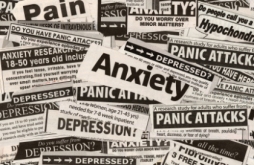 “How are you?” “I’m falling apart!“ might be our inner cry, but we often say “Fine,” without a hitch. How often do we think of what that question sounds like to someone who is not fine – to someone who is not“mentally” well? Do they always realize that they are not well? And if so, are they comfortable telling others or even getting help?
“How are you?” “I’m falling apart!“ might be our inner cry, but we often say “Fine,” without a hitch. How often do we think of what that question sounds like to someone who is not fine – to someone who is not“mentally” well? Do they always realize that they are not well? And if so, are they comfortable telling others or even getting help?
 Rev. Dr. Otis Moss, III of TUCC
Rev. Dr. Otis Moss, III of TUCC
Rev. Dr. Otis Moss, III of Trinity Unity Church of Christ (TUCC) in Chicago recently shared “Losing Daphne” with Ebony Magazine – a painful and true heart-drenching saga of his sister’s tumultuous struggle with her mental health. Her battle was with paranoid schizophrenia with delusions and hearing things that weren’t real. Pastor Moss recounts, “I heard her talking to herself. Whispers through the walls, the sounds of sadness, anger and pain leaked into…
View original post 794 more words
Posted in Family Engagement, Mental Health
Leave a comment
Early Childhood Education
 Americans have many values that we hold dearly. As shared in Real Family Values: Child Care and Early Childhood Education, “Americans hold few values dearer than equality, fairness, and opportunity, and high-quality early education is a key tool that helps level the playing field for children from low-income families. Access to high-quality child care and early childhood education has been shown to set children on a path to success, and it is one of the most important tools we have to break the cycle of poverty that exacerbates inequality in the United States. Early learning is also known to prepare children for school, but studies of Head Start participants have also shown that children who receive quality childhood education are healthier, stay in school longer, and earn more in their futures.”
Americans have many values that we hold dearly. As shared in Real Family Values: Child Care and Early Childhood Education, “Americans hold few values dearer than equality, fairness, and opportunity, and high-quality early education is a key tool that helps level the playing field for children from low-income families. Access to high-quality child care and early childhood education has been shown to set children on a path to success, and it is one of the most important tools we have to break the cycle of poverty that exacerbates inequality in the United States. Early learning is also known to prepare children for school, but studies of Head Start participants have also shown that children who receive quality childhood education are healthier, stay in school longer, and earn more in their futures.”
Parent Engagement is also a key element impacting students’ performance. Statistics also show that the achievement gap actually starts before students enter kindergarten –“48 percent of children from low-income families are not ready for school by age 5, and these low-income children face a 15-month learning gap compared to their more affluent peers.” Unfortunately, many families have work demands and other challenges that prevent each child from receiving the early support needed. Schools must recognize the importance of meeting children where they are so early high quality child care must be provided for all children who might not receive it otherwise.
The Child CARE Act, introduced by Rep. Donna Edwards and the Right Start Child Care and Education Act of 2013, introduced by Rep. Albert Ruppersberger (both of Maryland) and Sen. Barbara Boxer (CA), sought to amend the federal Child and Dependent Care Tax Credit by allowing more families access to it. This would particularly help low-income families cover the cost of child care. Legislation such as the Strong Start for America’s Children Act requires investments in our future. The Children’s Defense Fund explains “The Strong Start for America’s Children Act (S. 1697/H.R. 3461) invests in and encourages expansions of high quality home visiting programs, Early Head Start, Head Start, child care, pre-kindergarten and quality kindergarten programs to provide high quality early childhood development and learning experiences for low-income and vulnerable children from birth through age 5.” This act also promotes family support and parent engagement and assess with parents, community members and organizations a coordinated system to facilitate referrals and provision of services related to health, nutrition, mental health, disabilities and family support for children enrolled. Read a short summary here. You can also see child care status by state here.
For example, in our state, here is an excerpt of just some of the information provided. Even though Kentucky has some excellent schools, as you can see where less than 1/5 of 3 year olds and less than 1/2 of 4 year olds are in Head Start; much more than half of our students are not doing math or reading at grade level in 4th and 8th grades.
Child Hunger in Kentucky:
- Number of children who receive SNAP (food stamps) 318,000;
- Percent of eligible persons who receive SNAP (food stamps) 85%
- Number of children in the School Lunch Program 549,534
- Number of children in the Summer Food Service Program 33,091
- Number of women and children receiving WIC (Supplemental Nutrition Program for Women, Infants, and Children) 132,698.
Early Childhood Development in Kentucky:
- Percent of children under age 6 with all parents in the labor force 64.3%
- Number of children served by Head Start 20,687
- Average monthly number of children served by the Child Care Development Fund/CCDBG 30,900
- Average annual cost of child care for a four-year-old in a center $5,766
- Percent of 3-year-olds enrolled in state pre-k, Head Start, or special education programs 17.2%
- Percent of 4-year-olds enrolled in state pre-k, Head Start, or special education programs 47.8%.
Education in Kentucky:
- Annual expenditure per public school pupil $8,957
- Percent of public school fourth graders: unable to read at grade level 64.5% unable to do math at grade level 61.2%
- Percent of public school eighth graders: unable to read at grade level 63.7% unable to do math at grade level 69.3%
- Number (percentage) of 16- to 19-year-olds who are not enrolled in school and have not graduated from high school 10,241 (4.3%).
The trends in our country are clear that lower- income families have less resources and often receive the least amount of support for the challenges they face. America is among the richest countries, yet students should not have to be financially rich to receive a rich education. We must invest early in education and high quality child care and reduce the cost we pay in the end due to under-educated students, higher dropouts which lead to costly incarcerations and lost work force. All opportunities are not fair and equal, but Fair and Equal access to high quality learning opportunities should be everyone’s goal to insure our students are career and college ready and beyond.
JROTC, Minorities and the Military
 A recent article highlighted some troubling trends with Junior Reserve Officers’ Training Corps (JROTC) programs that target minorities for recruitment into the military-directly or indirectly. The Chicago Reporter points out that Chicago Public Schools is home to the largest junior reserve program in the country, with more than 9,000 cadets enrolled in programs at 45 of the district’s 104 high schools. Ninety-three percent of Chicago junior reserve cadets are African American or Hispanic, according to March figures from the CPS’ Department of JROTC. More than 70 percent of junior reserve programs are offered in high schools located in majority-black or majority-Latino ZIP codes.
A recent article highlighted some troubling trends with Junior Reserve Officers’ Training Corps (JROTC) programs that target minorities for recruitment into the military-directly or indirectly. The Chicago Reporter points out that Chicago Public Schools is home to the largest junior reserve program in the country, with more than 9,000 cadets enrolled in programs at 45 of the district’s 104 high schools. Ninety-three percent of Chicago junior reserve cadets are African American or Hispanic, according to March figures from the CPS’ Department of JROTC. More than 70 percent of junior reserve programs are offered in high schools located in majority-black or majority-Latino ZIP codes.
I participated in Army JROTC at Calumet High School in Chicago all four years and loved it! I was the 2nd highest ranking officer and even was presented an award and medal by our leader, Sgt. Parker and the CPS Superintendents for a city competition I won. Yes, I put this on my college applications! I was also in honors classes and in a Principal Scholar’s program promoting Engineering with extra Math and Science classes that I also loved! Even though we learned history and about some wars as do students taking American and European History, we also learned about discipline, leadership skills, marksmanship, military history, & drill routines. I was a class leader and enjoyed other facets of JROTC. We received ribbons for being on the honor roll, etc. There were scholarships available, but if students do ROTC in college all 4 years, they were required to go into the military.
“In a February 2000 testimony before the House Armed Services Committee, the armed service chiefs of staff testified that 30%–50% of graduating JROTC cadets go on to join the military overall where 50% of those from Air Force JROTC go to the military.” General Colin Powell said in his 1995 autobiography, My American Journey, that “the armed forces might get a youngster more inclined to enlist as a result of Junior ROTC,” but added that “Inner-city kids, many from broken homes, found stability and role models in Junior ROTC.” Former United States Secretary of Defense William Cohen referred to JROTC as “one of the best recruitment programs we could have.”
The armed forces was ordered to be integrated by President Truman in 1948. Out of approximately 1.1m in the army, more than 80 percent of soldiers are male, and 61.4 percent are Anglo; 20 percent are black, with 11.7 percent Hispanic. “There are only 53 minority generals among 391 in the Army, or 14 percent….
The Army’s Cadet Command, which oversees junior and senior ROTC programs in 1,731 high schools and 1,000 colleges, has taken steps to diversify the force.” However, high schools are focusing on educating students to be College and Career Ready. I suppose this option would include those who might want to pursue military careers. I do think this article raises a good concern to make sure we do not have a conflict of interest where we lag in investment and effort to better educate our students so that the military can be better filled while possibly targeting minorities to do so. With that said, we shouldn’t overlook the benefits of exposing our students to multiple subject areas and interests that might make school itself more bearable for some. Click here to see other benefits of JROTC.
Related Articles:
In Chicago schools’ Junior ROTC programs, some see a troubling trend
While we remember our veterans for whom we are deeply grateful, let us also take time to appreciate those “veterans of the city wars” fought for peace and freedom. In addition to those fighting in the U. S. Armed Forces, there are many who went up against “armed forces” while fighting in the streets for the civil rights promised to African-Americans and all Americans. Many of our rights were written “on paper“, however, many of the leaders fighting for our rights were portrayed “in papers” as villains, imprisoned, beat or assassinated.
Many Black groups speaking against poverty, unemployment, unequal rights, war, etc. were targeted by our government. The Counter Intelligence Program (COINTELPRO) FBI Director J. Edgar Hoover issued directives governing COINTELPRO, ordering FBI agents to “expose, disrupt, misdirect, discredit, or otherwise neutralize” the activities of these movements and their leaders. This operation was started shortly after the Black Panther Party was formed. Eighty-Five percent of its resources were used against Southern Christian Leadership Conference, the National Association for the Advancement of Colored People, the Congress of Racial Equality, other civil rights organizations; black nationalist groups; and the American Indian Movement. The other 15% was used on white hate groups, including the Ku Klux Klan even though the Klan had lynched/killed thousands of blacks, bombed many of their families, churches and homes.
Chicago’s Black Panther leader, was brutally murdered by the police in a raid soon to be forty-four years ago on the Chicago’s West side. Months later, a
federal investigation showed that only one shot was fired by the Panthers, although that number remained in dispute. Police fired 82 to 99 shots. Many saw this raid as a pretext to kill Fred Hampton, 21 years old. As he stated, “You have to understand that people have to pay the price for peace. You dare to Struggle, you dare to win.” Mr. Hampton also said, ” You can kill a revolutionary, but you can never kill the revolution.”
Geronimo studied political science at UCLA using a GI Bill from his service in the army. As a Black Panther leader, he was wrongfully imprisoned for a 1972 kidnapping and murder for 27 years, while 8 of those years were in solitary confinement. Johnny Cochran was on his legal defense team, who was known for “defending the underdog”. While in prison, Pratt studied law, built a defense, and together got his conviction vacated. He was freed in 1997,
eventually receiving $4.5 million as civil suit settlement for false imprisonment, with $2.75m being paid by L. A. and $1.75m by U. S. Dept. of Justice. He was working as a human rights activist up until the time of his death. He helped others believed to be wrongly imprisoned such as journalist and fellow Black Panther, Mumia Abu-Jamal. He was removed from death row in 2012, after Pratt’s death in 2011 in his adopted land of Tanzania of East Africa. He was also the godfather of the late rapper Tupac Shakur.
Seale and Newton, heavily inspired by Malcolm X, a civil rights leader assassinated in 1965, and his teachings, joined together in October 1966 to create the Black Panther Party for Self Defense and adopt the slain activist’s slogan “Freedom by any means necessary” as their own. Seale became the chairman of the Black Panther Party and underwent FBI surveillance as part of its COINTELPRO program. Newton earned a Ph.D. in Social
Science. Huey spent time in prison for manslaughter and later was fatally shot three times in the head in 1989 after leaving a crack house by a member of the Black Guerilla Family. Unfortunately, even some veterans “in the US Armed Forces” became hooked on drugs as well. In 2011, it was estimated that 35% of soldiers were addicted to prescription drugs – illegal drug addictions are also quite concerning. Spike Lee made a movie, The Huey P. Newton Story in 2001. The movie was initially created, written and performed, as a solo performance, by Roger Guenveur Smith.
Bobby was recruited by Huey Newton and Bobby Seale. He and Bobby were also some of the Panthers who rallied at their capital against the Mulford Act, a bill that would prohibit carrying loaded firearms in public and was arrested for carrying a gun. Bobby Hutton was killed at age 17 at an ambush against police a week after Dr. King’s assassination.
Eldridge Cleaver said, “police shot Bobby more than a dozen times after he had surrendered and had stripped down to his underwear to prove that he was unarmed.” Being the first Black Panther killed, he became a martyr for the cause. Thousands attended Lil Bobby’s funeral, including actor Marlon Brando and author James Baldwin. As of 1998, Lil’ Bobby Day is celebrated April 11th in California. His grave just received a headstone one decade ago.
In 1944, a bus driver tried to make a black lady, Irene Morgan, give up her seat to whites. Ms. Morgan refused, spoke up and was represented by the NAACP in the Supreme Court which struck down laws for segregated seating on interstate travel. This sparked the Freedom Riders led by James Farmer. In 1944, Rosa Parks was helping the NAACP investigate the gang rape of Recy Taylor in Alabama which was around a decade before Rosa refused to give up her seat which led to the Montgomery Bus Boycott.
Farmer is also known as one of the “big four” civil rights leaders. When he was 21, First Lady Eleanor Roosevelt invited him to the White House for a conversation with the president. In the following year, 1942, Farmer co-founded what later became the Congress for Racial Equality (CORE) which was integrated by gender and race.
Despite the victory of Irene Morgan vs. Virginia (1946) and Boynton v. Virginia (1960) to integrate interstate travel, southern states didn’t abide by it. Farmer is known for helping pioneer the dangerous “Freedom Rides”
to integrate buses. Some of their routes had been ambushed by the KKK and the bus was firebombed while the doors were held closed near Anniston, Al. An explosion actually caused the hatemongers to release the doors allowing the freedom riders to escape. They were still beaten. Most were refused care at the hospital and those who did get admitted, were tossed out due to angry mobs outside. Attorney General Kennedy sent a helper but at another stop, KKK beat the riders with bats and iron pipes. The Freedom Riders 50th Anniversary was celebrated in 2011.
Carmichael was a freedom train rider who also  was a leader of SNCC and the Black Panther Party. He was one of the riders sent to Parchman prison for more than a month and a half. “A call went out across the country to keep the Freedom Rides going and ‘fill the jails‘ of Mississippi” with freedom riders. While being hurt one time in jail as a rider, Carmichael began singing to the guards, “I’m gonna tell God how you treat me,” and the prisoners joined in. The governor was said to instruct guards to “break their spirit, not their bones. Stokely kept spirits up of the prisoners in jail by telling jokes. Many sang freedom songs which they felt fortified their unity, purpose and spirits. He later changed his name to Kwame Ture after rejecting the Black Panthers as not being separatists as he served political leaders in Ghana. The anniversary of his death of 15 years is this month.
was a leader of SNCC and the Black Panther Party. He was one of the riders sent to Parchman prison for more than a month and a half. “A call went out across the country to keep the Freedom Rides going and ‘fill the jails‘ of Mississippi” with freedom riders. While being hurt one time in jail as a rider, Carmichael began singing to the guards, “I’m gonna tell God how you treat me,” and the prisoners joined in. The governor was said to instruct guards to “break their spirit, not their bones. Stokely kept spirits up of the prisoners in jail by telling jokes. Many sang freedom songs which they felt fortified their unity, purpose and spirits. He later changed his name to Kwame Ture after rejecting the Black Panthers as not being separatists as he served political leaders in Ghana. The anniversary of his death of 15 years is this month.
Many other great civil rights leaders were assassinated while fighting for country’s freedoms including Dr. Martin Luther King Jr, Malcolm X, Medgar Evers, President John F. Kennedy, U. S. Senator Robert Kennedy and many more. Today’s freedoms have become more tangible because of the vision and sacrifice of these leaders. Below, are leaders who are some of the survivors of those movements and are still “keeping the good fight”! This brief list does not touch our iceberg of leaders such as Gen. Colin Powell, Rev. Al Sharpton, Rev. Jesse Jackson, Congressman John Lewis, Marian Wright Edelman – but these are some that are not mentioned as often.
A Black Panther later becoming a U. S. Representative of Illinois for the
Chicago area since 1993. Rep. Bobby Rush, along with the Congressional Black Caucus, recently organized a
National Emergency Violence Summit in Chicago this summer. I was proud to attend this summit in my hometown. Rep. Rush also recently led a tour with U. S. Illinois Senator Kirk through Englewood, one of the hot spots of violence in Chicago. He wanted to show the link between violence and the real issues of creating jobs and providing affordable housing. Follow @RepBobbyRush.
Co-founder of the Black Panther Party also targeted by CoIntelPro. Bobby Seale was with Lil Bobby Hutton when the protested in Sacramento against the Mulford Act, which would thwart their legal right to patrol the police with guns as they felt it necessary to defend themselves against police brutality. He was added to a charged group making it the “Chicago Eight” defendants for conspiracy and inciting to riot, in the wake of the 1968 Democratic National Convention, in Chicago. The trial of the Chicago Eight was depicted in the 1987 HBO television movie Conspiracy: The Trial of the Chicago 8, whose script relied heavily upon transcripts from the court proceedings. The Black Panther Party celebrated its 47th anniversary last month where Bobby Seale was on the agenda and 40 year anniversary in 2006 in California. Bobby cooks now and has a book, Barbeque’ N with Bobby. Follow @BobbySealeCom.
 Do you believe stories that Angela Davis was a criminal or a Black Panther? Well, she was neither! This revolutionary was wrongfully accused of murder and found innocent. Dr. Davis studied French in Paris, earned her doctorate in Germany and was teaching at UCLA. Recently a documentary, Free Angela, by Shola Lynch was released about her struggle to clear her name. Leaders like her are still relevant to today’s challenges and progress. Prisoner rights have been among her continuing interests; she is the founder of Critical Resistance, an organization working to abolish the prison-industrial complex. She is a retired professor with the History of Consciousness Department at the University of California, Santa Cruz, and is the former director of the university’s Feminist Studies department.
Do you believe stories that Angela Davis was a criminal or a Black Panther? Well, she was neither! This revolutionary was wrongfully accused of murder and found innocent. Dr. Davis studied French in Paris, earned her doctorate in Germany and was teaching at UCLA. Recently a documentary, Free Angela, by Shola Lynch was released about her struggle to clear her name. Leaders like her are still relevant to today’s challenges and progress. Prisoner rights have been among her continuing interests; she is the founder of Critical Resistance, an organization working to abolish the prison-industrial complex. She is a retired professor with the History of Consciousness Department at the University of California, Santa Cruz, and is the former director of the university’s Feminist Studies department.
Her work and our struggle continues. As she stated, “I think the importance of doing activist work is precisely because it allows you to give back and to consider yourself not as an individual who may have achieved whatever but to be a part of an ongoing historical movement.” Follow @FreeAngelaFilm.
Journalist Abu-Jamal had been a target of CoIntelPro. In 1980, at the age of 26, Mumia was elected president of the Philadelphia chapter of the National Association of Black Journalists. The following year, he was named one of the city’s “People to Watch” by Philadelphia Magazine. The article spoke of his “eloquent, often passionate and always insightful interviews.” He had recently lost his radio journalist job with National Public Radio before he was accused of killing a Philadelphia police officer, Daniel Faulkner in 1981, who had served in the U. S. Army. A debate continues, “Has Abu-Jamal been imprisoned justly or unjustly?” He was sentenced to death but received a new capital sentencing hearing. His lawyer said that the results constituted “extraordinarily important new evidence that establishes clearly that the prosecutor and the Philadelphia
Police Department were engaged in presenting knowingly false testimony“. In this transcript, there is a comment by a witness that the police made her falsely testify against Mumia. He was removed from death row in 2012, but was not granted a retrial. Some critics wonder why his younger brother, William Cook, did not testify on Jamal’s (born Wesley Cook) behalf at the 1982 trial. He could not be found but witnessed the crime as he was driving the Volkswagen when Officer Faulkner pulled him over. Abu-Jamal had been associated with and had given voice to the MOVE group to which the Philadelphia Police Department was antagonistic. In 1978, over 600 police raided MOVE’s home with guns and arrested Move-9. All were sentenced to over 30 years in prison. Interestingly, Abu-Jamal was one of the reporters who covered this story. Mumia Abu-Jamal spoke out from the crowd of journalists, sharply raising questions about the way police had destroyed evidence after the raid. Through a call on the radio, Mumia aka “William Wellington Cole” got Judge Mahmed of the case to admit he had “no idea” who the murderer was, which highlighted the miscarriage of justice of the imprisonment of the MOVE-9. Such acts earned him his grassroots moniker, “The Voice of the Voiceless.“
Reportedly, “A police report later that night shows that Civil Affairs inspector Fencl was quickly called into this investigation. Fencl was the same police official who gave the order to strip Black Panthers in the street in 1970 (and photographed for the papers to humiliate them before their convention), who planned the raid on MOVE’s Powelton home and who headed the political police unit that had spied on Mumia since he was 15…. In 1974 two pregnant women from MOVE were man-handled by cops until they miscarried. MOVE’s demonstrations intensified. The police responded with a campaign of “arrest on sight.” Between 1974 and 1976, there were 400 arrests of MOVE members, resulting in bail and fines of more than half a million dollars. Life Africa, a three-week-old baby, was killed during one violent police attack.” Later in 1985, MOVE’s house was attacked and bombed by police, killing children, MOVE founder– John Africa, and others while destroying over 50 homes.
Abu-Jamal wrote books, notably 1995’s Live from Death Row, which deals with prison, social and political issues. There is a petition seeking his release. He is the subject of the song, “Voice Of The Voiceless” by Rage Against the Machine. A controversial film was made in 2010 by Tigre Hill. Stephen Vittoria made a film about him, Long Distance Revolutionary. You can follow @MumiaAbuJamal and @LDRMovie. Presidents Jacques Chirac of France and Nelson Mandela of South Africa, Foreign Ministers Kinkel of Germany and Derijcke of Belgium, and members of the Japanese Diet have urged the U.S. to grant Jamal a new trial. Officer Daniel Faulkner’s wife, Maureen, still contends that the rightfully convicted murderer of her husband is in jail.
think the importance of doing activist work is precisely because it allows you to give back and to consider yourself not as a single individual who may have achieved whatever but to be a part of an ongoing historical movement. Read more at http://www.brainyquote.com/quotes/authors/a/angela_davis.html#CsGl8QB3vZviR9pR.99
I think the importance of doing activist work is precisely because it allows you to give back and to consider yourself not as a single individual who may have achieved whatever but to be a part of an ongoing historical movement. Read more at http://www.brainyquote.com/quotes/quotes/a/angeladavi368084.html#lH2155h1Yhciv1Xb.99
I think the importance of doing activist work is precisely because it allows you to give back and to consider yourself not as a single individual who may have achieved whatever but to be a part of an ongoing historical movement. Read more at http://www.brainyquote.com/quotes/quotes/a/angeladavi368084.html#lH2155h1Yhciv1Xb.99
I think the importance of doing activist work is precisely because it allows you to give back and to consider yourself not as a single individual who may have achieved whatever but to be a part of an ongoing historical movement. Read more at http://www.brainyquote.com/quotes/quotes/a/angeladavi368084.html#lH2155h1Yhciv1Xb.99
Also read DebateandSwitch’s:
- Shooting Down Violence
- Challenges for Military Families and Veterans
- Today’s Relevance of Angela Davis
- Black Leaders Share Agenda with President Obama
Related articles
- Black Panthers for unity (socialistworker.co.uk)
- Black Panther Party History Month and political prisoners in the U.S. (intrepidreport.com)
- The Everyday Heroism of Bobby Seale (aboriginalwriter.wordpress.com)
- Ghosts Of COINTELPRO (mintpressnews.com)
- Power to the People – Remembering the Black Panther Party (moorbey.wordpress.com)
- Top Five Black Civil Rights Assassinations
- MOVE-9 Bombing Anniversary on Rachel Maddow
- Essay on MOVE-9
- To Write individuals of MOVE-9
Increasing Graduation Rates
The average national graduation rate has risen to 80% from 78%, which was the highest it had been since 1974! However, the goal of this president is to have that increased to 90% by 2020. This is a distinct challenge since, every 26 seconds, a high school student drops out! For minorities, the drop out rates are even more startling! While an average of 85% of Whites are graduating annually, only 67% of African-Americans are graduating in the same four year period. According to the Schott Report, nationally, nearly half of all African-American males are not graduating in the scheduled four year span! I recently presented some of this alarming information at the National PTA Emerging Minority Leadership Conference in Washington DC where our keynote speaker was none other than, Alma Powell, chair of America’s Promise Alliance who hosts the annual Grad Nation Summit, which I was honored to be sponsored to attend before. Graduation and dropout rates are not the inverse of each other and are hard to compare as definitions vary. For example, some states or districts might count 9th-12 graders where some only count 10th-12th graders. This would automatically be skewed since many dropout in the ninth grade, and some even sooner.
There are several important indicators that suggest a higher likelihood that a student might drop out of school. According to the National Dropout Prevention Center/Network, who will host its national conference in Atlanta in November–National Family Literacy Month. Those indicators include:
* Poor attendance
* Low grade point average
* Low standardized test composite scores
* Number of grade retentions
* Number of discipline referrals
* Educational level of parent
* Special program placement
* Free/reduced lunch program
* Number of school moves (transfers)
* Low reading and math scores
* Ethnic/gender distinctions
* Language spoken in the home
* Number of suspensions
* Interest in school
* Participation in extracurricular activities
* Pregnancy/teen parent
* Number of counseling referrals
* Family status (single parent family, family size)
Some studies also suggest that environment and school size can contribute to the drop out rates. Some factors cannot be immediately changed such as family status, educational level of parent, ethnic/gender trends. However, we can have impact in a number of areas. We will just look a few in this article.
- Attendance
Attendance has become such an area of concern that September has been designated as National Attendance Awareness Month. Chronic absenteeism can be defined as missing 20 days or being absent ten percent or more of school days. By schools analyzing their attendance patterns more intently, some have been able to adopt strategies that identify areas for change and have improved their records. Some schools personalized interventions by helping to establish and build relationships with staff and students that increased expectations and support systems. Others allowed parents to respond to attendance, behavior or curriculum issues on-line to reduce the need for them to have to take off work to come up to the school. This alternative has shown to increase parent involvement and engagement.
- Low Reading Scores
Statistics show that students who are not reading at grade level by the end of the third grade are more likely to drop out later. According to National Assessment of Educational Progress (NAEP) 2011 Nation’s Report Card, there was a 25 point gap in White-Black average reading scores for 4th and 8th graders. When students are not prepared to continue with the higher-level challenges, they slowly lose interest in school and develop self-esteem issues that impact their belief that they can do it. They often become embarrassed by not knowing the answers and afraid of their peers ridiculing them. Sometimes, students are continually passed on despite the fact that they are not prepared for the next level which can slow them down even more. Ninth grade has become the most crucial grade where many students drop out! However, the ground work for that act is likely set long before then.
Early Literacy
The Achievement Gaps have been shown to appear prior to children even starting school. This shows how important early literacy and family engagement is for lifelong learning. This summer, Governor Pat Quinn signed a new law that lowers the compulsory school age for students in Illinois in order to ensure all children have the opportunity to build a solid foundation for academic achievement. Governor Quinn believes the law, which goes into effect July 1, 2014, “will also help to combat truancy. Research shows that children who start school at an earlier age are less likely to drop out of school, be placed in special education or commit crimes, and more likely to attend college.”
1. Parents are the first educators and help to stimulate communication and important brain development which occurs early. 2. Early quality education is even more important for parents working multiple job and perhaps are not able to provide some of the at-home training that boosts skills and interests in learning. Low-income students tend to show the lowest proficiency in reading which can lead to a life-long prediction of problems vs. a life-long learning experience. 3. Investing in our students early is worth promoting more positive outcomes instead of paying for prisons, drug rehabs, health care, Supplemental Assistance Nutrition Programs (SNAP) that are increased for students who drop out. 4. Our productivity loss as a country also increases when each child loses out on realizing his/her potential!
- Cohorts
Center for Public Education points out that it takes more than just knowing indicators that suggest higher probability for students to drop out because those indicators do not identify which ones will or will not. “Cohorts” provides more detailing information by tracking students “grade to grade as members of a “cohort”—a group of students who start out in the same grade at the same time.”
- Civic Marshall Plan
America’s Promise Alliance outlines the Civic Marshall Plan to increase graduation rates which includes 5 key evidence-based components each at the elementary/middle and high school levels”.
I. Elementary/Middle School Goals: Increase on-grade level reading by 4th grade; Reduce chronic absenteeism; Monitor early warning indicators; Better design middle school to promote engagement and rigor preparation; Adult/Peer Support with wrap-around services as needed.
II. High School Goals: Transition Support especially for 8-10 graders from schools with graduation rates under 75%; Transform Dropout factories; Raise Compulsory School Age to 18 everywhere. (Our state of Kentucky recently passed Senate Bill 97 to raise our dropout age to 18.); Provide every child access to Career and College Ready paths-even dropouts; Dropout Recovery support.
We must collaborate with schools, families and communities to help to reduce this national epidemic! “No Child Left Behind”, is not just a reform needing “reauthorization”, but it is a real goal of which we should never lose sight.
Related articles/links:
- National Family Literacy Month
- Nations Report Card
- Emerging Minority Leadership Conference
- The School-to-Prison Pipeline
- Grad Nation Summit
Posted in Achievement Gap, Diversity, Emerging Minority Leadership, Grad Nation Summit, Graduation Rates, Legislative Hearings, National Family Literacy Month, PTA, School to Prison Pipeline
Tagged Alma Powell, America's Promise Alliance, Center for Public Education, Civic Marshall Plan, compulsory age, Emerging Minority Leadership, Grad Nation Summit, National Dropout Prevention, National Family Literacy Month
3 Comments
Feeding the Hungry… In a SNAP
 Every five years, the Farm Bill has to be reauthorized. Due this year, Representatives passed the bill to cut nearly $4o billion from the Supplemental Nutrition Assistance Program (SNAP), formerly known as food stamps. Even though the majority of the House is Republicans, I was proud to see that not all of them voted for this proposed cut to SNAP which would impact millions of Americans, including the elderly, disabled and 22 million children. Fifteen House Republicans voted NAY, including legislators Capito (WV2nd), Meehan (PA7th), Smith (NJ4th), Jones (NC3rd) and Gibson (NY19th). You can see how each Representative voted here. The heart-wrenching twist about this vote is that it came two days after the Census Bureau reported that 15 percent of Americans, or 46.5 million people, live in poverty!
Every five years, the Farm Bill has to be reauthorized. Due this year, Representatives passed the bill to cut nearly $4o billion from the Supplemental Nutrition Assistance Program (SNAP), formerly known as food stamps. Even though the majority of the House is Republicans, I was proud to see that not all of them voted for this proposed cut to SNAP which would impact millions of Americans, including the elderly, disabled and 22 million children. Fifteen House Republicans voted NAY, including legislators Capito (WV2nd), Meehan (PA7th), Smith (NJ4th), Jones (NC3rd) and Gibson (NY19th). You can see how each Representative voted here. The heart-wrenching twist about this vote is that it came two days after the Census Bureau reported that 15 percent of Americans, or 46.5 million people, live in poverty!
I appreciate the points made in West Virginia Gazette’s editorial about the correlation with poverty and hunger to a student’s education achievement. “Children who do not get enough food make smaller gains in math and reading achievement between kindergarten and third grade and are more likely to repeat a grade in elementary school.” Absenteeism is also affected which has a major impact on student success and the dropout rate. Many at-risk students also need strengthened relationships to help their resiliency in these matter to better cope and do well in school. This is especially true of homeless children and children with an imbalanced load of risk factors.
Some critics of SNAP seem to portray the impoverished on food  stamps as those who “won’t” work. According to the Center on Budget and Policy Priorities, “The overwhelming majority of SNAP recipients who can work do so. Among SNAP households with at least one working-age, non-disabled adult, more than half work while receiving SNAP — and more than 80 percent work in the year prior to or the year after receiving SNAP. The rates are even higher for families with children — more than 60 percent work while receiving SNAP, and almost 90 percent work in the prior or subsequent year. “
stamps as those who “won’t” work. According to the Center on Budget and Policy Priorities, “The overwhelming majority of SNAP recipients who can work do so. Among SNAP households with at least one working-age, non-disabled adult, more than half work while receiving SNAP — and more than 80 percent work in the year prior to or the year after receiving SNAP. The rates are even higher for families with children — more than 60 percent work while receiving SNAP, and almost 90 percent work in the prior or subsequent year. “
One reassuring point is that this bill, Nutrition Reform and Work Opportunity Act of 2013 (HR 3102) has been sent to the Senate. It is in committee, which I believe is the Agriculture, Nutrition & Forestry Committee. chaired by Sen. Debbie Stabenow (D-MI). Please contact your Senators and ask them to vote NAY on this bill especially those on the Agriculture Committee! Find your U. S. legislator here.
In America, we enthusiastically celebrate “Hunger Action Month“ in September and “World Food Day” on October 16th. We generously give away turkeys at Thanksgiving and Christmas. We humbly serve the hungry at community kitchens and provide non-perishable food through food banks throughout the year. However, in our state, “We’re very concerned with any cuts to the SNAP program at a time when one in six Kentuckians don’t know where their next meal is coming from. We’re barely keeping up with the pace of the demand,” said Tamara Sandberg, executive director of the Kentucky Association of Food Banks.
Find your nearest food bank here. Many are indeed grateful for that help. But, while the poor is having billions of dollars of food taken out of his mouth, millions sit by criticizing those left hungry, instead of criticizing and stopping those getting rich from it.
 Rep. George Miller denounced this vote saying: “To add insult to injury, 14 members of Congress have gone so far as to vote to enrich themselves and wealthy special interests with farm subsidies, while voting against benefits to millions of the neediest and most vulnerable Americans. I issued a report earlier this year that detailed these 14 members of Congress who are collectively worth up to $124 million and received at least $7.2 million in farm subsidies but voted to cut nutrition aid for 47 million Americans without batting an eye.” Let’s call for an investigation of this matter!!
Rep. George Miller denounced this vote saying: “To add insult to injury, 14 members of Congress have gone so far as to vote to enrich themselves and wealthy special interests with farm subsidies, while voting against benefits to millions of the neediest and most vulnerable Americans. I issued a report earlier this year that detailed these 14 members of Congress who are collectively worth up to $124 million and received at least $7.2 million in farm subsidies but voted to cut nutrition aid for 47 million Americans without batting an eye.” Let’s call for an investigation of this matter!!
What do you think happens, when many needed jobs are unavailable and people are without food? Who pays for the increased crime wave and police support? Who pays for additional medical costs from lack of nutrition? Who pays for the lack of student achievement likely to increase? Who pays for the increased incarceration rates that follow low student achievement? Is this how we Save money?
Our country is built upon benevolence and a foundation of community. This is why in the United States, I am proud of the largest and oldest volunteer child advocacy organization, PTA, that helped to fight for the Healthy Hunger-Free Kids Act a few years ago and started the free lunch program in schools decades ago. “The bill increases access to vital anti-hunger measures, improves the nutrition quality of all foods served in schools throughout the school day, and provides a wide variety of supports.” We are doing our share. Many non-profit organizations- using direct methods or social media – are raising millions to feed the hungry of many ages and races. But let’s not take away their dignity and a consistent means for survival while they work toward a stable income that does not leave them in poverty. SNAP benefits are not dominated by minorities as some seem to think, but over 70% of recipients are of the majoritan culture.
USDA explains how SNAP works: The amount of benefits the household gets is called an allotment. The net monthly income of the household is multiplied by .3, and the result is subtracted from the maximum allotment for the household size to find the household’s allotment. This is because SNAP households are expected to spend about 30 percent of their income on food.
(October 2012 through September 2013)
| People in Household | Maximum Monthly Allotment |
|---|---|
| 1 | $ 200 |
| 2 | $ 367 |
| 3 | $ 526 |
| 4 | $ 668 |
| 5 | $ 793 |
| 6 | $ 952 |
| 7 | $ 1,052 |
| 8 | $ 1,202 |
| Each additional person | $ 150 |
Senate Majority Leader, Rep. Harry Reid, did not suppress how distressed he was over the vote. “House Republicans’ vote to deny nutrition assistance to hungry, low-income Americans is shameful. The Senate will never pass such hateful, punitive legislation.”
Related articles
- Dem Rep. Condemns Vote to Cut SNAP
- Hungry? Don’t Expect House Republicans to Help – or Care (truthdig.com)
- Kentuck.com Editorial: SNAP cuts Impact
- SNAP Cuts can Impact 875,000 Kentuckians in Fall
- WV Editorial on SNAP cuts
- Educational Leadership: Relationships impact resiliency
- On cutting SNAP: Stop this nonsense (thegrio.com)
- ‘Meanspirited class warriors’ (maddowblog.msnbc.com)
Related links
Posted in Hunger, Nutrition, PTA, SNAP
Tagged Absenteeism, Center on Budget and Policy Priorities, Christmas, Farm Bill, Food, Healthy Hunger-Free Kids Act, HR 3102, HR3102, Hunger Action Month, national school lunch program, PTA, SNAP, Supplemental Nutrition Assistance Program, United States House of Representatives, World Food Day
7 Comments
Family Engagement in Education Act
 Family Engagement in children’s education has been proven to be not only beneficial for the schools but also for increasing effectiveness and success of children’s education! In fact, studies show that engaging families is also cost effective; schools would have to spend more than $1,000 dollars per pupil to get the same value-added results. Harvard Family Research Project (HFRP) provides research on which policy makers and education advocates can base policies that promote family engagement as an effective strategy to achieve student success.
Family Engagement in children’s education has been proven to be not only beneficial for the schools but also for increasing effectiveness and success of children’s education! In fact, studies show that engaging families is also cost effective; schools would have to spend more than $1,000 dollars per pupil to get the same value-added results. Harvard Family Research Project (HFRP) provides research on which policy makers and education advocates can base policies that promote family engagement as an effective strategy to achieve student success.
The FEE Act of 2013 was introduced in the U.S. House of Representatives by Congressman Glenn Thompson (R-PA) and Congresswoman Carolyn McCarthy (D-NY); in the Senate by Senators Jack Reed (D-RI), Sheldon Whitehouse (D-RI) and Chris Coons (D-DE).
Our Voices, Our Actions
As echoed at our National PTA Convention this year, our voices are needed to help to get legislators to pass this important Family Engagement in Education (FEE) Act of 2013! The FEE Act of 2013 puts forth a framework for systemic, integrated, and sustainable family engagement at all levels, while allowing flexibility and resources for local innovation and strategic partnership. (See further details below on local and state centers.) This is without authorizing any new spending!
Seeking Support: Action I – Legislators should support students and families by cosponsoring the Family Engagement in Education Act of 2013. To cosponsor in the Senate, contact Moira Lenehan-Razzuri in Senator Reed’s office at 202-224-4642/ Moira_Lenehan@reed.senate.gov. Please click here to take action now* with a prepared letter that you can edit/send asking them to support the bill or to cosponsor it.
Our Sen. Mitch McConnell (R-KY) responded last month to my letters that the FEE of 2013 was referred to the Senate Committee on Health, Education, Labor and Pensions (HELP) for review and defers policymakers to the reauthorization of Elementary and Secondary Education Act (ESEA) for guidance. Our other Sen. Rand Paul (R-KY) is on that committee and I attended a Senate HELP hearing on the reauthorization of ESEA. Afterwards, I met with his staff in Washington, albeit he hasn’t been in the times I was there and hasn’t responded yet to this specific letter. Nonetheless, let’s see how we can use this update. The Senate HELP Committee is chaired by Sen. Tom Harkin (D-Ia). Note, he is an Ex-Officio on the Children and Families committee, chaired by Sen. Kay Hagan (D-NC) with centrist members such as Mark Kirk (R-IL).
_________________________________________
The Beginner Advocate can Stop Here! However, if you want to hone your action, we can make use of knowing where the bill is! Also, if we did not know, we could track this bill here.
Honing Support: Action II – Now, you can aim your efforts and time on the current Decision Makers! 1. Check the Senate HELP committee list. If your Senator’s name is there, Click on it to get contact data to send notes, tweets, etc. 2. If you see a senator of a state where you have friends, then send this to them, asking them to target that senator! As a constituent, they can also send emails and/or do Support Action I above!
The Bill’s Findings By Congress
1. Family engagement in a child’s education raises student achievement, improves behavior and attendance, decreases drop-out rates, and improves the emotional and physical well-being of children. Families are critical determinants of children’s school readiness as well as of students’ decision to pursue higher education. Effective family engagement is a great equalizer for students, contributing to their increased academic achievement, regardless of parents’ education level, ethnicity, or socioeconomic background.
2. Research on school improvement has identified meaningful partnerships with families and communities as 1 of 5 critical ingredients necessary to turnaround chronically low-performing schools.
3. Positive benefits for children, youth, families and schools are maximized through effective family engagement that–
- Is a shared responsibility in which schools, other community agencies and organizations are committed to reaching out to engage families in meaningful ways and families are committed to actively supporting their children’s learning and development;
- Is continuous across a child’s life from birth to young adulthood; and
- Reinforces learning that takes place in all settings.
Statewide and Local Family Engagement Centers
In addition, each State shall award a grant or contract to a statewide nonprofit organization to establish a Statewide Family Engagement Center to provide comprehensive training, technical assistance, and capacity-building to local educational agencies, organizations that support family-school partnerships, and other organizations that carry out what National Family Engagement Alliance (NFEA) deems critical: parent education and family engagement in education programs.
A Local Family Engagement Center will also be established to evaluate the usefulness and effectiveness of innovative approaches demonstrated by these centers in engaging families in their children’s education by providing training, services, supports, and opportunities that meet families’ needs and remove barriers to their engagement in their children’s education to improve student achievement. A myriad of organizations in our area such as Northeast KY PTA, 4H Clubs, Pathways, United Communities to Advance our Neighborhoods, Inc. (UCAN) might be interested in providing such support.
Thank you for taking time to Act and Explore a little deeper into making CHANGE! *National PTA offers its leaders and members many resources for providing effective advocacy. You can read more advocacy posts on this blog or visit NPTA’s website to find information on PTA’s federal public policy agenda. The advocacy website also has links for an advocacy toolkit to help members and state leaders maximize their local grassroots organizing efforts. Read PTA’s blog every Thursday to get PTA Government Affairs updates and great ideas for advocacy and grassroots efforts.
Related articles
- Blogging at 2013 National PTA Convention in Cincinnati (debateandswitch.wordpress.com)
- National PTA Applauds Family Engagement Provisions in ESEA
- ESEA Flexibility Status by State
- Moving Forward with Family Engagement
- The Education Revolution IS Being Televised
- BULLYING ATTACKED at National PTA Youth Summit
- Safer Schools with ED and PTA
- Mom Congress Parents Attend ESEA Hearing & Meet with DOE
- Senate HELP ESEA Reauthorization Hearing
Posted in Advocacy, Convention, Family Engagement, Parent Engagement, PTA, Take Action
Tagged 4H, America's Promise, Carolyn McCarthy, Chris Coons, Education, ESEA, family engagement, Family Engagement in Education Act, Harvard Family, Harvard Family Research Project, HFRP, Jack Reed, Mitch McConnell, National Family Engagement Alliance, National PTA Convention, NFEA, Parent-Teacher Association, Pathways, PTA, Rand Paul, reauthorization, Senators Jack Reed, Sheldon Whitehouse, socio-emotional, UCAN, United Communities
7 Comments
 Otha Thornton, the newly installed president of National PTA (NPTA) – the oldest child advocacy group in our country – is a senior operations analyst with General Dynamics in Fort Stewart, Georgia. He is a retired United States Army Lieutenant Colonel and his last two assignments were with the White House Communications Agency and United States Forces-Iraq in Baghdad. Thornton earned the Bronze Star Medal for exceptional performance in combat operations during Operation Iraqi Freedom 2009-2010.
Otha Thornton, the newly installed president of National PTA (NPTA) – the oldest child advocacy group in our country – is a senior operations analyst with General Dynamics in Fort Stewart, Georgia. He is a retired United States Army Lieutenant Colonel and his last two assignments were with the White House Communications Agency and United States Forces-Iraq in Baghdad. Thornton earned the Bronze Star Medal for exceptional performance in combat operations during Operation Iraqi Freedom 2009-2010.
Previously, Thornton served on National PTA’s Board of Directors, Legislative Committee, Membership Committee, and Executive Search Committee. During his time with Georgia PTA, Otha served on the Board of Directors as legislative chair and as an Advisory Group member for Georgia’s Partnership for Excellence in Education.
Thornton is making history as this historical advocacy group’s first African-American male president! He started his inaugural address at the 2013 National PTA Convention in Cincinnati by thanking God and his family-including his wife, Caryn, and his mother. He then quoted the great Dr. Benjamin E. Mays – a former president of Morehouse College (Otha’s alma mater) and a spiritual mentor to Dr. Martin Luther King, Jr. – who believed that the purpose of education included building character and serving mankind. Otha also gave homage to his predecessor, Betsy Landers and to the National PTA founders whose organizations merged in 1970 between the National Congress of Parents and Teachers and the National Congress of Colored Parents and Teachers, forming today’s National PTA.
“This is an exciting opportunity, and I am proud to have been elected to lead the charge for parents and teachers across the nation, and to ensure that our children have the tools and support they need to succeed,” Thornton said. “As president, I am committed to expanding PTA’s membership, leadership development and advocacy efforts to strengthen the association and fully empower families, teachers and communities to advocate for all children.”
Otha Thornton describes himself as a “servant leader“ who values listening, collaborating, diversity and inclusion at all levels. He recalled a comment that one of his superiors used in the military, which was to “Make sure your video matches your audio.” He affirmed to PTA that our hard currency is our voting and our voice! “If I were you,” he stated, “I would not sit on the sidelines and complain! Get in the game!” He also suggested that we become more like players of “chess” instead of “checkers”, being committed to the long haul and not just show up at school when there is trouble. Volunteering in the schools help our children and our schools. “Accountability starts at home, but not all have that.” So PTA serves as their advocate as well, he elaborated. “If you are not at the table, you are on the menu.”
“The PTA is critical in bringing the voices of parents to the forefront on issues, working together to strengthen school safety, provide kids with healthy, nutritious lunches and implement consistent learning goals across the country,” Thornton said. “Parents are an essential voice in the education reform debate, and we need to be much more than an audience. We need to be partners in the education of our children, and I am looking forward to engaging with diverse communities across the country to ensure that all parents have a voice in their children’s education.”
This speech followed his reception held the prior evening at the Underground Railroad Freedom Center. Harriet Tubman led slaves through this network of safe houses – the Underground Railroad – to freedom. I believe PTA helps to lead all children and parents to acquiring a better education – which is the highway, railway and runway to freedom. We are looking forward to continuing this journey with Otha as its conductor!
The NPTA Convention closed with scintillating music by Tje Austin (pronounced tI) who appeared on The Voice and is from Texas-the site of the 2014 NPTA Convention! He did a fabulous remake of What’s Love Got To Do With It originally by Tina Turner. He has a unique style reminiscent of John Legend with a hint of Eric Benet for good measure. Now Mr. Thornton, I believe Tje has matched the audio with the video.
Related articles
- Blogging at 2013 National PTA Convention in Cincinnati (debateandswitch.wordpress.com)
- First African-American man becomes national PTA president (wlwt.com)
- 1st African-American Names As Head Of The National PTA (djsdoingwork.com)
 I am excited to serve as one of the official bloggers for the National Parent Teacher Association (NPTA) annual convention this week! The keynote speaker will be Erin Gruwell – diversity champion, educator & award winning author with the Freedom Writers Foundation. The Special Speaker will be Roger Goodell, NFL Commissioner, marking our partnership with the NFL and kicking off a health and safety initiative. Join us June 20-23, 2013 at the 117th National PTA Convention and Exhibition at the Duke Energy Convention Center in Cincinnati, Ohio where more than 1,000 attendees representing PTA’s nearly 25,000 units will attend to learn, network and become re-energized as volunteer advocates for all children. For the first time at the convention, the National PTA will host a Youth Leadership Summit, interactive leadership and advocacy training that will prepare youth leaders to mobilize their peers around specific issues in their school and community. The Summit includes several workshops, team projects and a breakfast with the National PTA Board of Directors to discuss education issues that are of concern to students. This convention will offer a wide variety of high-quality workshops with valuable information, ideas and resources for PTA members to take back to their schools and communities. You can join in on twitter conversations using #PTA2013. You can also follow NPTA, @NationalPTA and me, @bdrumartin.
I am excited to serve as one of the official bloggers for the National Parent Teacher Association (NPTA) annual convention this week! The keynote speaker will be Erin Gruwell – diversity champion, educator & award winning author with the Freedom Writers Foundation. The Special Speaker will be Roger Goodell, NFL Commissioner, marking our partnership with the NFL and kicking off a health and safety initiative. Join us June 20-23, 2013 at the 117th National PTA Convention and Exhibition at the Duke Energy Convention Center in Cincinnati, Ohio where more than 1,000 attendees representing PTA’s nearly 25,000 units will attend to learn, network and become re-energized as volunteer advocates for all children. For the first time at the convention, the National PTA will host a Youth Leadership Summit, interactive leadership and advocacy training that will prepare youth leaders to mobilize their peers around specific issues in their school and community. The Summit includes several workshops, team projects and a breakfast with the National PTA Board of Directors to discuss education issues that are of concern to students. This convention will offer a wide variety of high-quality workshops with valuable information, ideas and resources for PTA members to take back to their schools and communities. You can join in on twitter conversations using #PTA2013. You can also follow NPTA, @NationalPTA and me, @bdrumartin.
At the convention, the office of President will be transitioned from Betsy Landers to Otha Thornton, who will be NPTA’s first African-American male President. However, this is not the first time an African-American male has been at its helm, as Byron V. Garrett was the first who served as Chief Executive Officer (CEO) in 2008. Byron was the first male to head the group in over 100 years. He also served with the first male President, Chuck Saylors in 2009. Otha served as a Board of Director and is a retired United States Army Lieutenant Colonel and two of his assignments were with the White House Communications Agency and United States Forces-Iraq in Baghdad. Thornton earned the Bronze Star Medal for exceptional performance in combat operations during Operation Iraqi Freedom 2009-2010.
The Senate Health, Education, Labor and Pensions (HELP) Committee recently passed the Strengthening America’s Schools Act of 2013, legislation to reauthorize the Elementary and Secondary Education Act (ESEA), aimed at improving areas of No Child Left Behind. I was honored to attend one of HELP’s prior hearings on ESEA in Washington DC. This is important work impacting thousands of schools across the country. National PTA applauds the inclusion of family engagement provisions in ESEA. The legislation would build local and state capacity for effective family engagement in education by using research-based practices. It also maintains and improves the Parent Information and Resource Centers Program (PIRC) – the sole federal program dedicated to family engagement. As Betsy Landers states, “Parents must be considered valuable stakeholders if we are serious about accomplishing meaningful and sustainable education reform.”
We thank Betsy for her tenure and look forward to the new leadership that will continue taking this great advocacy organization forward!
About National PTA: National PTA® comprises millions of families, students, teachers, administrators, and business and community leaders devoted to the educational success of children and the promotion of family engagement in schools. PTA is a registered 501(c)3 nonprofit association that prides itself on being a powerful voice for all children, a relevant resource for families and communities, and a strong advocate for public education. Membership in PTA is open to anyone who wants to be involved and make a difference for the education, health, and welfare of children and youth.
 |
||
Related articles
- National PTA applauds family engagement provisions in ESEA reauthorization; calls for bipartisan approach moving forward (camarillocouncilpta.wordpress.com)
- Safer Schools with ED and PTA (debateandswitch.wordpress.com)
- PTA Advocacy Alert: Tell Congress NO to additional, drastic cuts to education (chsptsa.typepad.com)
- Teacher and Staff Appreciation (debateandswitch.wordpress.com)
 Since the Civil War, our country has been celebrating Memorial Day, initially called, “Decoration Day” to remember those who died while serving in the United States Armed Forces. According to Professor David Blight of Yale University, “the first Memorial Day took place on May 1, 1865 in Charleston, SC, after a group of African-Americans, mostly former slaves, gave 257 Union soldiers a proper burial. The black community in Charleston then consecrated the new cemetery with an unforgettable parade of 10,000 people, led by 3,000 black school children.” Some folks don’t distinguish this holiday from Veteran’s Day, when we officially celebrate all Americans who served.
Since the Civil War, our country has been celebrating Memorial Day, initially called, “Decoration Day” to remember those who died while serving in the United States Armed Forces. According to Professor David Blight of Yale University, “the first Memorial Day took place on May 1, 1865 in Charleston, SC, after a group of African-Americans, mostly former slaves, gave 257 Union soldiers a proper burial. The black community in Charleston then consecrated the new cemetery with an unforgettable parade of 10,000 people, led by 3,000 black school children.” Some folks don’t distinguish this holiday from Veteran’s Day, when we officially celebrate all Americans who served.
The White House recently released the 2014 budget which sustains the $8.5 billion it invests across military installations. As stated in the Office of Management and Budget, “The Department of Defense (DOD) provides a broad spectrum of programs and services for service members and military families including: mental health and counseling services; deployment assistance; child care and youth programs; morale, welfare, and recreation programs; commissaries; DOD-run schools for military dependents; military spouse employment programs; and many other services. DOD is working to improve its support to the All-Volunteer Force by identifying and discontinuing redundant or less effective military family programs, while increasing support for programs that are proven to serve military families well. “
National Parent Teacher Association (PTA) is also concerned about children of military families citing that, “The average military student will attend six to nine different school systems in their lives from kindergarten to 12th grade graduation.” A Compact has been formed to help to compensate for some of the challenges faced by these students. Some of the specific educational issues covered by the compact for those who qualify include:
-
Enrollment, Educational Records, Immunizations
-
Kindergarten & First Grade Entrance Age, Placement & Attendance
-
Course & Educational Program Placement, Special Education Services
-
Placement Flexibility and Absence Related to Deployment Activities
All states except, New Hampshire, New York, Minnesota, Montana and Oregon have accepted this voluntary Compact. If you live in a state that has accepted this compact, you can contact your superintendent to remind them of its commitment and offerings. If you live in a state that has not accepted it, contact your legislator requesting them to do so. Obtain a script here to expedite that process! Also, access the Military Interstate Children Compact Commission (MIC3) for more information, such as “Resolving Education Transition Issues for Military Families”.
Other challenges plague veterans that include unemployment and homelessness. In recent years,  unemployment for new veterans soared well over 11%. According to the National Alliance to End Homelessness, over 62,000 veterans are homeless on any given night, which is 13% of the homeless population. In our state of Kentucky, the number of homeless vets dropped by 31% in 2011-12 whereas those in states like Wyoming increased 275% whose veterans represent 23% of their homeless population. The homeless vet population includes those who fought in many conflicts including World War II. But, severe disabilities obtained by those in Afghanistan and Iraq greatly correlate to those who are homeless, including women.
unemployment for new veterans soared well over 11%. According to the National Alliance to End Homelessness, over 62,000 veterans are homeless on any given night, which is 13% of the homeless population. In our state of Kentucky, the number of homeless vets dropped by 31% in 2011-12 whereas those in states like Wyoming increased 275% whose veterans represent 23% of their homeless population. The homeless vet population includes those who fought in many conflicts including World War II. But, severe disabilities obtained by those in Afghanistan and Iraq greatly correlate to those who are homeless, including women.
Another crucial concern for veterans include a rising number of suicides. According to the New York Times, suicides for active duty troops rose to 350 in 2012. In 2011, 25% of the troops committing suicide had been diagnosed with substance abuse while 50% had suffered intimate break ups. According to Wesley Poriotis, Founder of Veterans Across America, there are nearly 22 veterans committing suicide each day. According to Leah Gunn Barrett, Executive Director of New Yorkers Against Gun Violence, there is a correlation between unemployment, suicides and gun availability. Many men in their 50’s with lower economic outlooks and even young veterans have made fatal choices to cope. “Suicides are nearly 62 percent of all gun deaths in the United States, and more than 50 percent of all suicides are committed with a gun.” Also, gun usage lead to more fatal attempts. “Suicide rates are nearly twice as high in parts of the country with weak gun laws and higher rates of gun ownership” – such as in the aforementioned Wyoming.
For many of us, it gives us honor to remember the contributions of others. For some, Memorial Day marks the last holiday before the long anticipated summer – a time that many homeless people don’t have to struggle for insulation, but must survive the sweltering heat. For many veterans and their families, I hope it gives them a warm sense of accomplishment to know that many of us appreciate them and their sacrifices for our freedoms. Whether you’re hosting or supporting a 2k event by the Veterans Administration or enjoying a play by the talented, Mitzi Sinnott which highlights homelessness among veterans, let’s show them we care by speaking up with groups like A Soldiers Project and others for better treatment of veterans and for better access of needed services. As we light that candle to remember their sacrifices to keep our freedoms safe, let us also memorialize the spirit in that ole’ Taps chorus:
“Day is done, gone the sun
From the lakes, from the hills, from the sky
All is well, safely rest
God is nigh.”

“Coming Home” By Cayden Bennett, National PTA Reflections Arts Award of Excellence Winner for Intermediate Visual Arts. (5th grade-RMIS of Kentucky)
Related articles
Today’s Relevance of Angela Davis
Codeb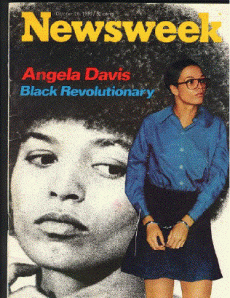 lack Films, a division of Lionsgate Entertainment, is releasing a new movie about the revolutionary, Angela Davis, on April 5th! Black Bloggers Connect touts Free Angela as “a must see documentary! A candid and powerful account of the tumultuous times and a woman who challenges a society that is afraid of all that she represents. Filled with elements of intrigue, suspense and conspiracies, the film delivers by empowering and inspiring diverse international audiences with its message of hope and redemption.” I believe this documentary by writer/director Shola Lynch is itself revolutionary. It dares to sail us back into a clamorous time in our history when it was frequently ill-fated to “rock the boat” and whose visible struggle was merely the tip of the iceberg. This young afro-wearing “Black” woman studied French in Paris, earned her doctorate in Germany and was teaching at UCLA. Yet, she became viewed as a threat to many who protected the status quo, simply because she exercised her human right to explore her political freedom. Angela Davis not only was a leader in the feminist and civil rights movement, but she held an unpopular support for Communism. I am mindful of the great spirit of the French writer, Voltaire, who said, “I may disagree with what you have to say, but I shall defend, to the death, your right to say it.” Her uninhibited expression of her beliefs led many to fear her strength and influence. Several years after four little girls whom she knew, were bombed in 1963 in one of her hometown churches of Birmingham; she was accused in 1970 of some illegal activity and linked to the murder of four people. She was cleared of the charges in 1972 but still had undergone major smearing that cost Angela her job and many freedoms as she went underground for fear of not getting a fair trial. Remember, this was shortly after the 1969 Black Panther raid believed to be a pretext to murdering the Illinois Black Panther leader, Fred Hampton where it was reported that the Panther possibly only fired one shot, but the police fired close to 82-99 shots!
lack Films, a division of Lionsgate Entertainment, is releasing a new movie about the revolutionary, Angela Davis, on April 5th! Black Bloggers Connect touts Free Angela as “a must see documentary! A candid and powerful account of the tumultuous times and a woman who challenges a society that is afraid of all that she represents. Filled with elements of intrigue, suspense and conspiracies, the film delivers by empowering and inspiring diverse international audiences with its message of hope and redemption.” I believe this documentary by writer/director Shola Lynch is itself revolutionary. It dares to sail us back into a clamorous time in our history when it was frequently ill-fated to “rock the boat” and whose visible struggle was merely the tip of the iceberg. This young afro-wearing “Black” woman studied French in Paris, earned her doctorate in Germany and was teaching at UCLA. Yet, she became viewed as a threat to many who protected the status quo, simply because she exercised her human right to explore her political freedom. Angela Davis not only was a leader in the feminist and civil rights movement, but she held an unpopular support for Communism. I am mindful of the great spirit of the French writer, Voltaire, who said, “I may disagree with what you have to say, but I shall defend, to the death, your right to say it.” Her uninhibited expression of her beliefs led many to fear her strength and influence. Several years after four little girls whom she knew, were bombed in 1963 in one of her hometown churches of Birmingham; she was accused in 1970 of some illegal activity and linked to the murder of four people. She was cleared of the charges in 1972 but still had undergone major smearing that cost Angela her job and many freedoms as she went underground for fear of not getting a fair trial. Remember, this was shortly after the 1969 Black Panther raid believed to be a pretext to murdering the Illinois Black Panther leader, Fred Hampton where it was reported that the Panther possibly only fired one shot, but the police fired close to 82-99 shots!
This film is an important impetus for us to practice the African principle of Sankofa, which means to remember our past. Our history involving Angela Davis is still significant for a number of reasons:
1. Some of her struggle involved the strategy of labeling to produce fear. This strategy is being used today of linking people to Marxism and is still playing a role in our society and political arena. President Obama was wrongly labeled as Marxist by some opponents. In fact, Pat Boone recently accused our president of being Marxist. It’s sort of ironic in a way since according to Wikipedia, “the term capitalism, in its modern sense, comes from the writings of Karl Marx.”
2. Dr. Davis is a founder of the grassroots organization, Critical Resistance, which works to dismantle the “prison-industrial complex” (PIC). This group attributes the growth of PICs to the privatizing of goods provided to prisons. This is extremely relevant as we see the expansion of prisons and especially see many young adults ending up in prison as part of what many education advocates as myself refer to as the “School-to-Prison Pipeline.
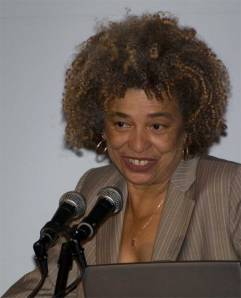 3. The Critical Resistance’s concern of the prison expansion revolves around the belief that it masks the real problems of homelessness, mental illness, unemployment, drug addiction and illiteracy. Some of this concern was loudly amplified in the Sandy Hook massacre, when the shooter was identified as one struggling with mental health and yet was able to access many guns – guns that quickly released so many rounds that many of the victims had multiple holes in their bodies.
3. The Critical Resistance’s concern of the prison expansion revolves around the belief that it masks the real problems of homelessness, mental illness, unemployment, drug addiction and illiteracy. Some of this concern was loudly amplified in the Sandy Hook massacre, when the shooter was identified as one struggling with mental health and yet was able to access many guns – guns that quickly released so many rounds that many of the victims had multiple holes in their bodies.
I am greatly inspired by dynamic women like Angela Davis, who like Sojourner Truth and others, boldly fought with the double-edged sword of rights for women and freedom for African-Americans! Because of such extensive bravery, I can advocate for education and children without having to risk our lives to do so! Davis promoted “Power to All People” while speaking Truth to Power! Learning more about Dr. Angela Davis’s struggle and legacy is still relevant to understanding our own, past, present and potential future! This allows true advocacy to intersect with bold activism. I believe she said it best, “I think the importance of doing activist work is precisely because it allows you to give back and to consider yourself not as a single individual who may have achieved whatever but to be a part of an ongoing historical movement.” Learn more about the Free Angela Davis Blog Contest.
Related articles
- New documentary details how Angela Davis became Angela Davis (tv.msnbc.com)
- NYc, Fri.4/5: Angela Davis, Soffiyah Elijah et at Beyond the Bars Conference (moorbey.wordpress.com)
- WMC Feature: Activist Angela Davis Reaches a New Generation (womensphilanthropy.typepad.com)
- The School-to-Prison Pipeline
- Jada Pinkett Smith Talks Angela Davis Movie (blackamericaweb.com)
- EXCLUSIVE: Angela Davis Remembers The Year That Changed Her Life in New Documentary (essence.com)
-
Partnership for Free Angela Documentary
Posted in Black Leaders, Civil Rights, Prison Industry, Revolutionary
Tagged African American, Afro-wearing, Angela Davis, Codeblack Films, Critical Resistance, Fred Hampton, Free Angela, Karl Marx, Lionsgate, Marxism, Pat Boone, Power to All People, Prison-industrial complex, Shola Lynch, Sojourner Truth
3 Comments
Social Media
Social Media! Well some of you might still be wondering just what is Social Media?” Social Media is generally defined as “websites and applications that enable users to create and share content or to participate in social networking.” Some of the popular forms and the ones I tend to use include Facebook, Twitter, LinkedIn, Pinterest, Instagram, YouTube, Blogs and more! The definition given above can be a bit misleading. Because of the word “social”, some assume it is a big waste of time or just something for the kids or movie stars. With this misconception, many can miss out on the myriad uses of social media that involve advocacy, building businesses, student projects, news updates, political involvement and more. Social media can be very serious and is big business for many!
How to get started?
Posted in Uncategorized
Leave a comment

 What feeds millions in America and is reauthorized twice in a decade? Every five years, the
What feeds millions in America and is reauthorized twice in a decade? Every five years, the 


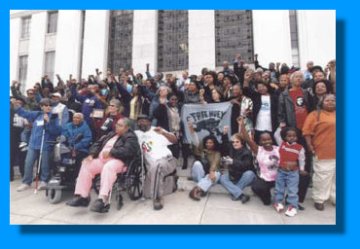
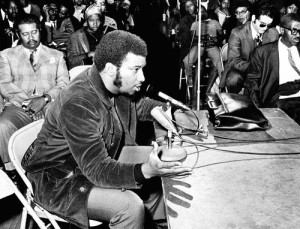

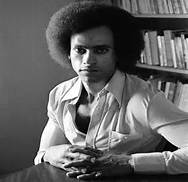


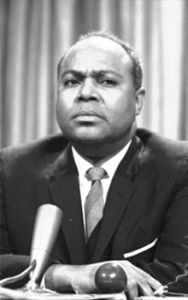

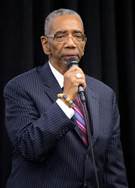

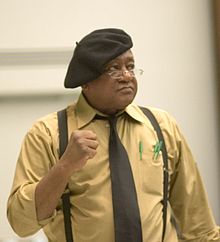
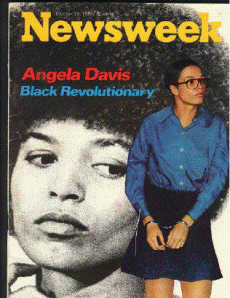




 and thoughts of injuring others. “The participants took part in interviews and completed two tests to assess their depression and anxiety levels. Between 1998 and 2009, the number of students coming into counseling who were diagnosed with at least one mental disorder increased 3 percent, from 93 percent to 96 percent. The percentage diagnosed with moderate to severe depression increased from 34 percent to 41 percent,” said John Guthman, Director of Student Counseling Services at Hofstra University in New York.
and thoughts of injuring others. “The participants took part in interviews and completed two tests to assess their depression and anxiety levels. Between 1998 and 2009, the number of students coming into counseling who were diagnosed with at least one mental disorder increased 3 percent, from 93 percent to 96 percent. The percentage diagnosed with moderate to severe depression increased from 34 percent to 41 percent,” said John Guthman, Director of Student Counseling Services at Hofstra University in New York.


